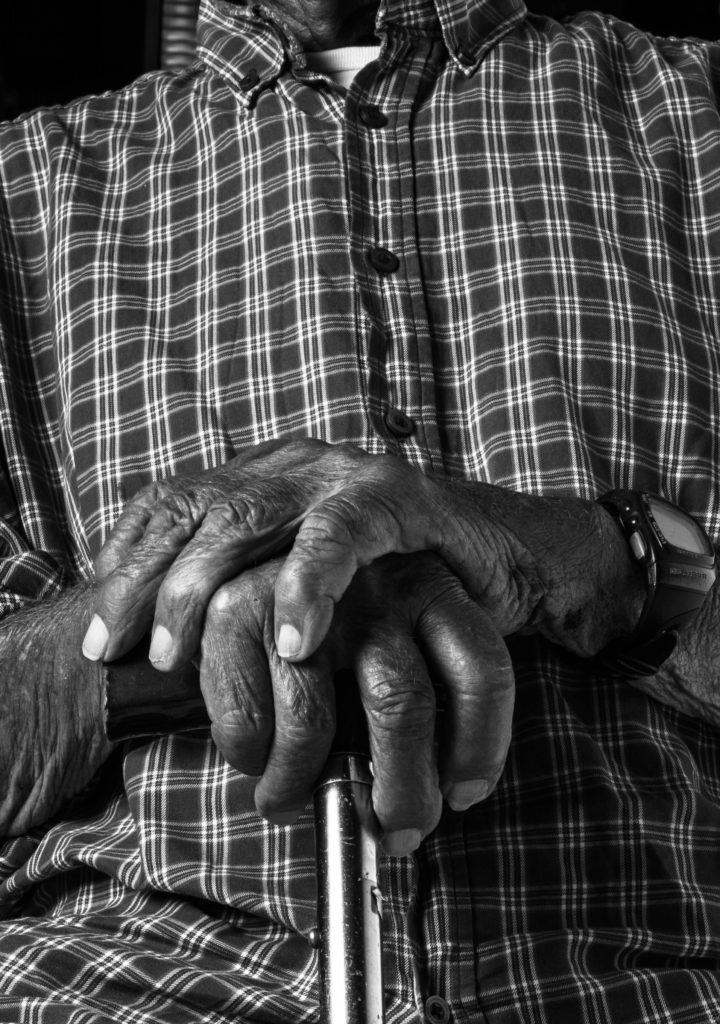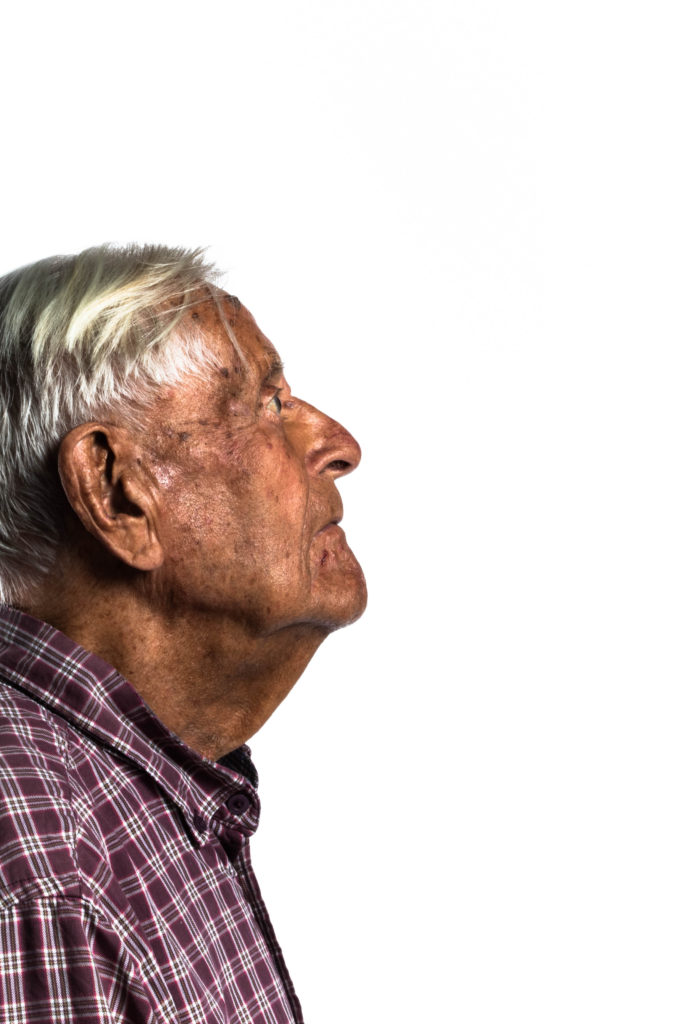
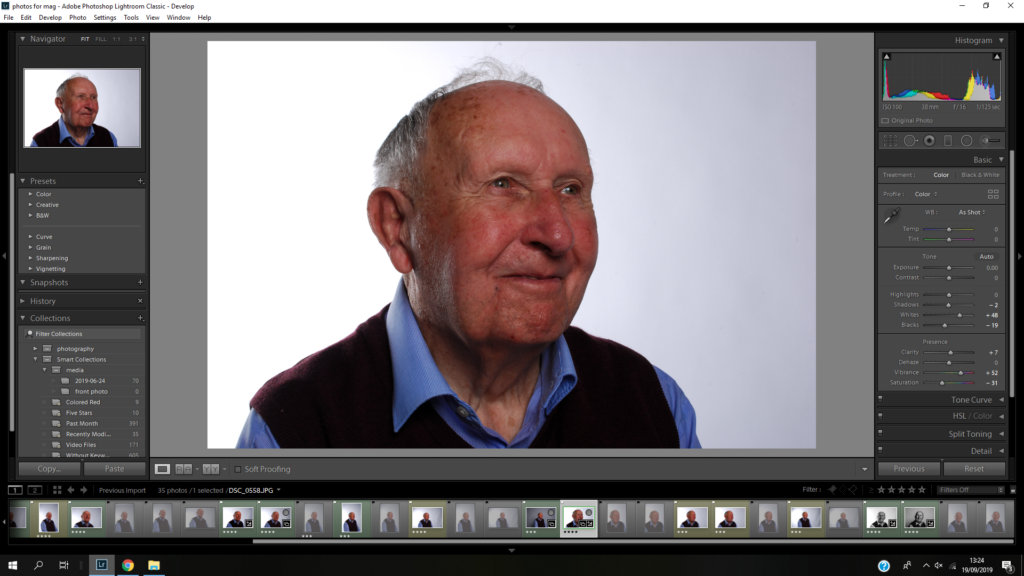










As part of out research into the Liberation and Occupation of Jersey, following the path of portraiture in order to document the lives, experiences and stories of those who experienced the liberation and occupation, we were lucky enough to be able to meet and listen to the stories of 2 individuals who experienced both the initial occupation of Jersey in 1940, and its liberation in 1945. Henley (14 at the time of the occupation) and Joan (6 at the time of the occupation) both gave detailed accounts of their experiences with life under German rule, with Henley recalling the time that, at the age of 14, he was able to render a German guard almost unconscious by continually giving him glasses of cider, and the soldier was drunk enough to not notice when the farmers had time to hide a lot of the wheat they had farmed in order to avoid having to hand it in to the Germans. In contrast, Joan was able to recall her experience with walking to school through a number of German outposts and identification points, as she passed by the fenced off and mine covered beaches. The lack of transport (confiscated by the Germans) and the censorship and limits imposed during the occupation brought the native community together, with adults crafting bicycle tyres out of hosepipe and rope, and children knitting water bottle cosys for the Red Cross. Both Joan and Henley recalled the liberation of Jersey as being a huge event, with Henley not being able to see the liberation ship for the huge crowds of people blocking his view, and Joan missing the crowds at the harbour altogether due to her inability to travel across the island from her home to town.
After listening to the stories of Henley and Joan, we had the chance to photograph them in the school studio. I was able to collect images of both Henley and Joan, and singular images of just Joan. In the studio I had my IOS set to 100 (as the lighting in the studio was already very bright) and my shutter speed was at F16. I also used the Daylight white balance in order to slightly correct the colour based on the studio lighting and colours. Below are the results of my photoshoot, shown in a contact sheet:
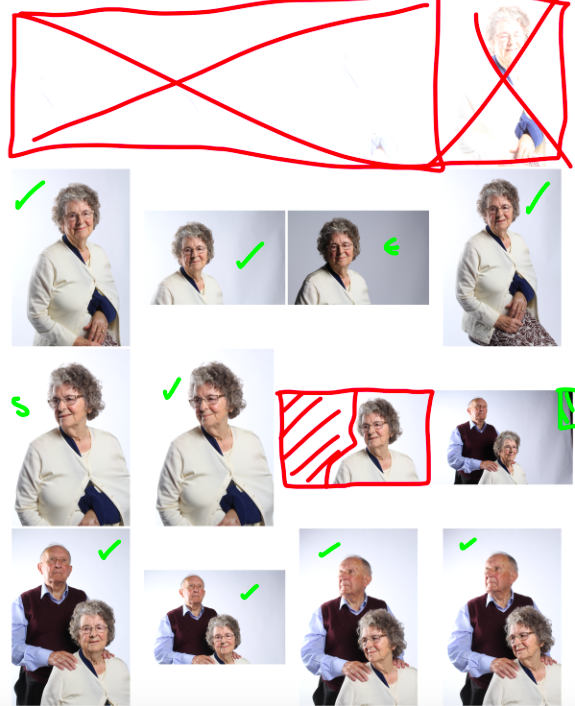
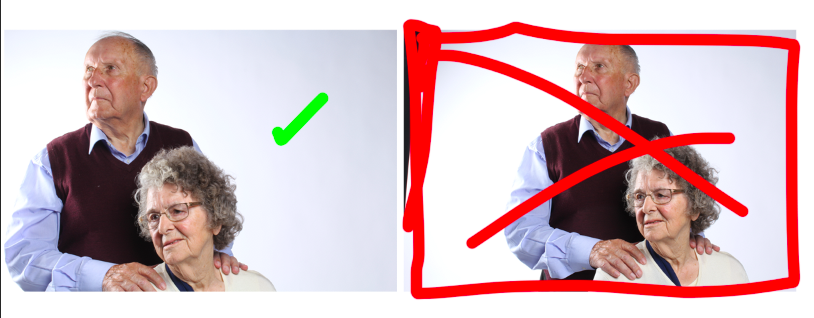
Key: GREEN “S” = Small issue with the subjects pose – GREEN TICK = candidate for final image – GREEN HASHED AREA = problem area/needs editing out of final image – RED HASHED AREA = problem area too big to edit out – RED “x” = rejected image
The first row of the contact sheet includes images that are so over-exposed that they appear as white boxes. This was my own error as I originally failed to adjust the IOS from 6400 down to 100, and so the amount of light that entered the lens was way too much to produce a clear image. I adjusted this afterwards and the rest of my images are shot at the right IOS.
After taking the images in the studio and using the contact sheet in Photoshop to nail down my selection to my final choices, I moved the final images onto the editing stage. The following are the results of the images I edited:

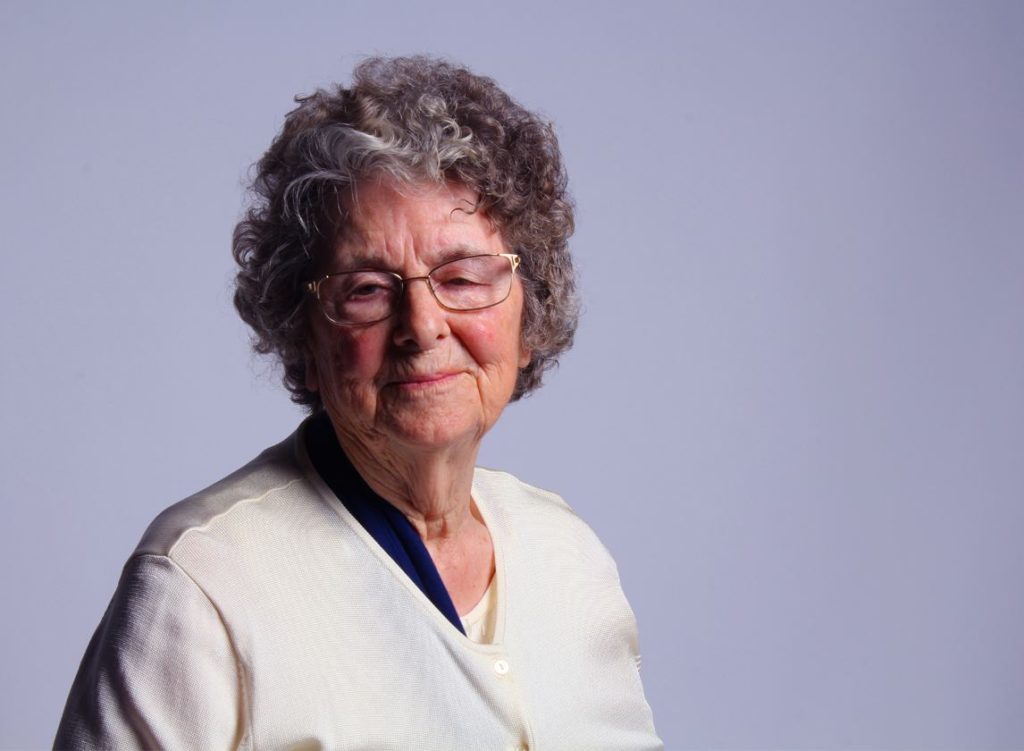
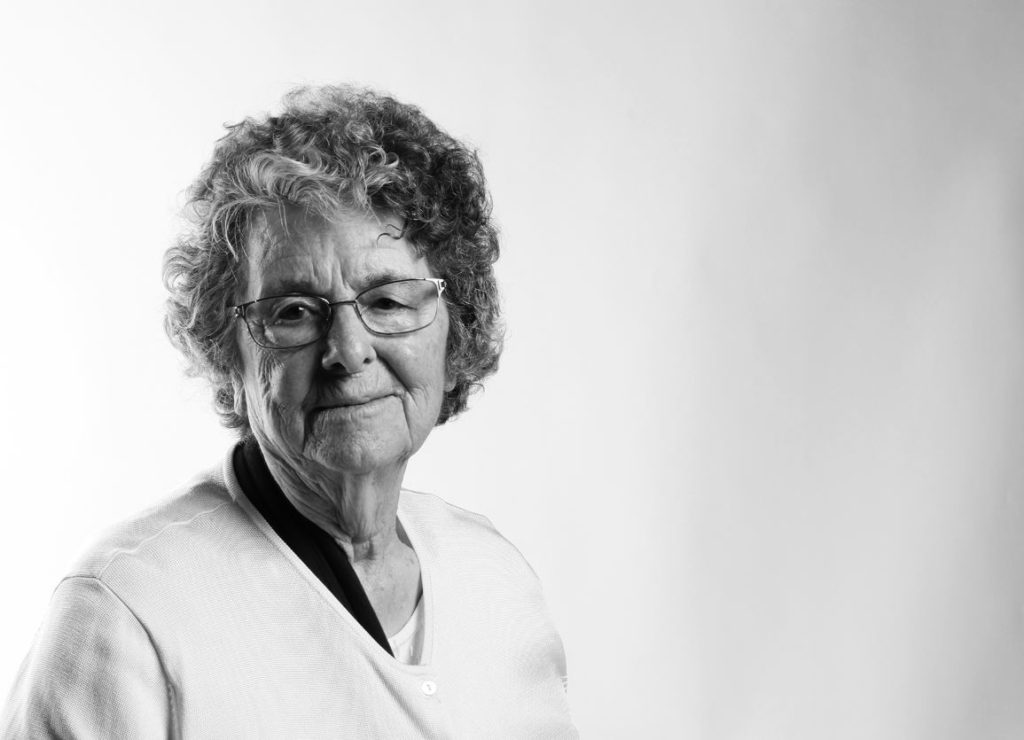

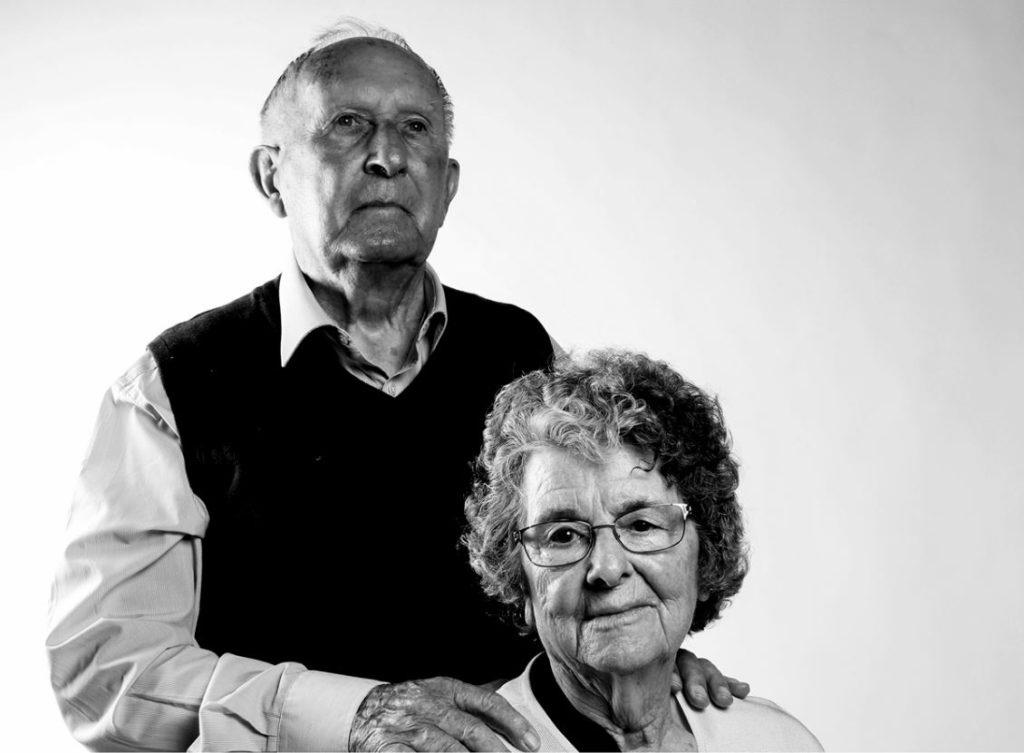
I was able to use Photoshop to adjust the contrast and colors of most of these images, in order to make the initial edits. I then moved the images to Light-room to further make use of the tools available on that software. In Light-room I especially focused on the last image, as I was able to edit the image to draw up the contrast in order to give it a more bold look. Below is the before and after Light-room edit:

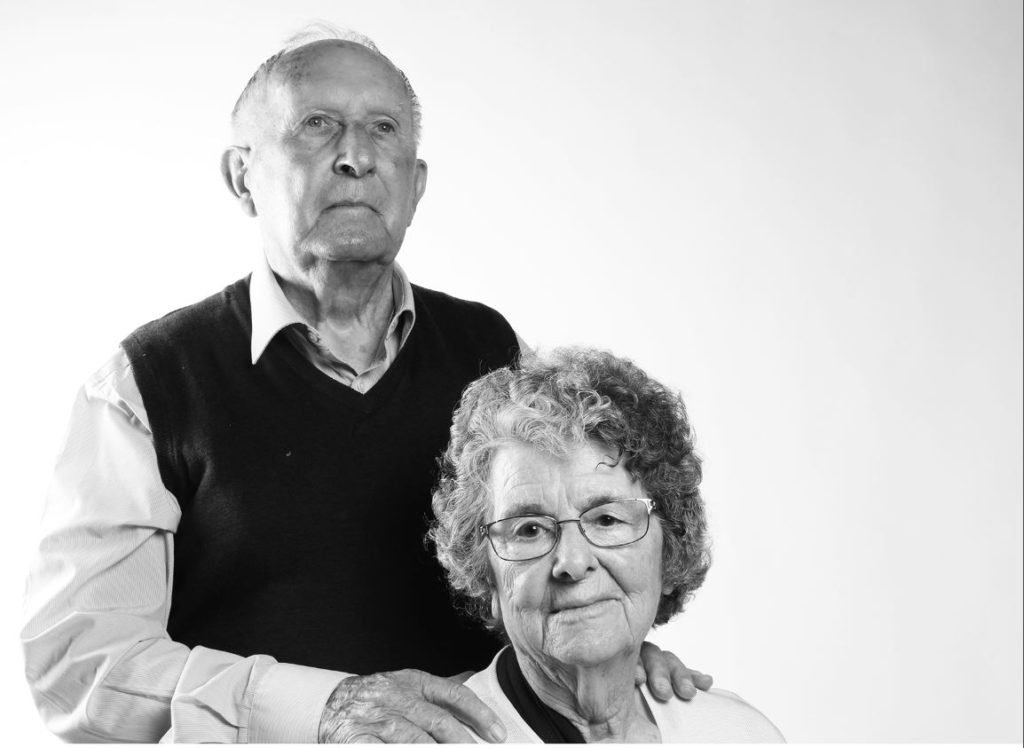
The image on the right was the original from the Photoshop edit, which I found to be too over-exposed (especially around Henley’s right-hand shoulder). I used Light-room to adjust the contrast and more specific colour settings (highlights, shadows, blacks, whites and clarity). I feel like the final product (left) looks much more bold and eye drawing than the original on the right.
For some of the images, I adjusted the colour settings so that they were in black and white. I did this in order to make a link to the imagery of the occupation and liberation of Jersey, which was all taken in black and white as colour photography only became common for the average person in the 1960’s. I feel like black and white images also allow for the details in the textures and shapes of the images to be better emphasized, and it allows for certain aspects of the image (such as eyes and clothing) to present as more eye-catching, and can between hold the attention of the viewer. Below is an example of an image I edited into black and white for these reasons:

Furthermore, on some images I made the decision to simply lower the saturation of the images in order to dull down the colours of the image, giving the final image a more somber and dulled image. I made this decision as I feel that it accurately reflects the atmosphere and feelings surrounding the occupation of Jersey, as the overall atmosphere at the time (and the feeling that came with many of the stories given by Joan and Henley) was solemn and very close to being hopeless. I therefore tried to reflect this through the colour of some of my images, which are dulled and almost drained completely of colour. An example of one of these images can be seen below:

For the final image, I made the decision to raise the saturation and contrast, and made some colour adjustments in Photoshop that involved heightening the colour balance so that it fell more towards a lilac/subtly feminine colour (especially in the background). I did this in order to highlight that through the occupation, many individuals were still able to keep hope, and regardless of the solemn circumstances, many individuals were able to find pleasure in small things (such as dances and cycling). The editing of the colour in this image is a reflection of the subject being able to maintain her femininity and hope for a better future, even through the difficult times of the occupation:

After the initial editing of colour and saturation, I began to experiment with some of the images, using things such as boarders, adding in other images to the initial image in the form of collaging, and experimenting with different techniques in order to enhance the image further.
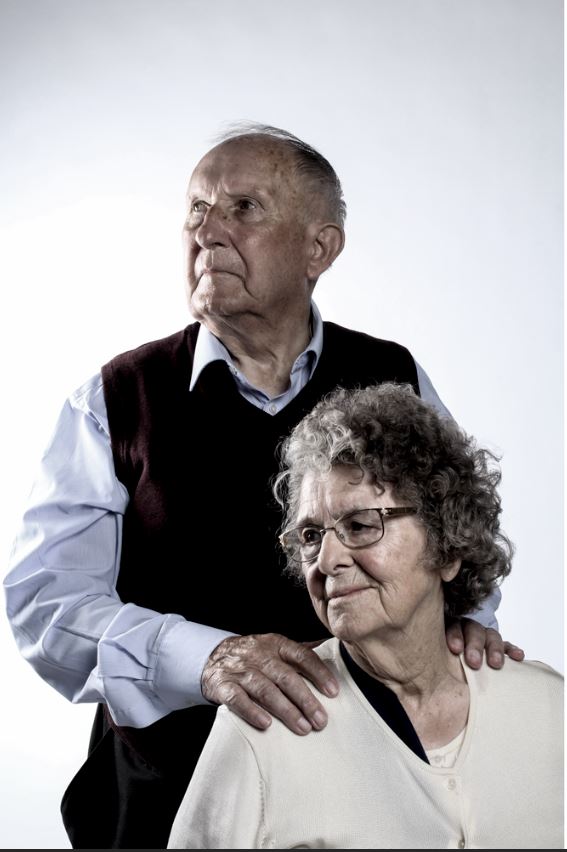
In the above image, I used the spot removal tool in Light-room to remove some of the light colored fluff that was on Henley’s jumper, which distracted from the image itself.
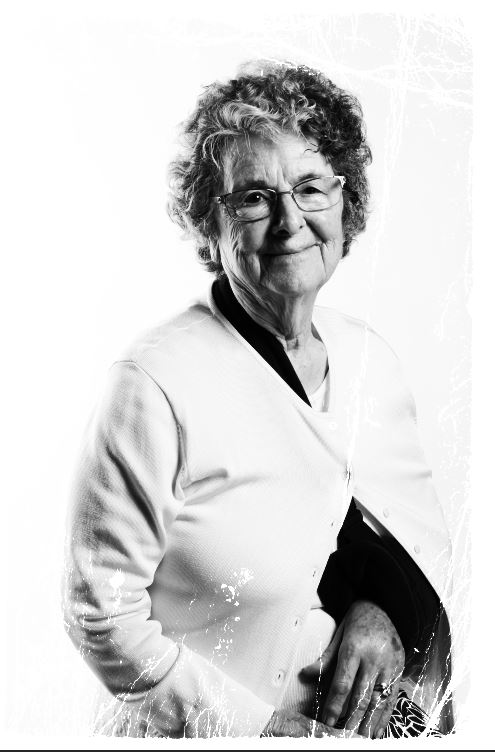

The above 2 images of Joan have been edited to produce a different framed effect on each of them. I experimented with this in order to see if the frames make the image seem more eye-catching.

I further experimented with the above image, using the same template for the frame as I used in the original, but this time cutting and stretching the damaged effect of the frame more over the subject, allowing the contrast between her darker shape/outline and the white damaged effect to become more clear. Below is the process I used to do this:

I selected the colour dodge option on the layer that the frame was on. In doing so I only kept the white damaged effect, removing the black background so the subject could be seen through it.

I then copied and pasted the frame onto multiple layers, and used the lasso tool to cut the frame so that I could fit it into the correct areas of the subject so that the damaged effect covered the darker areas.
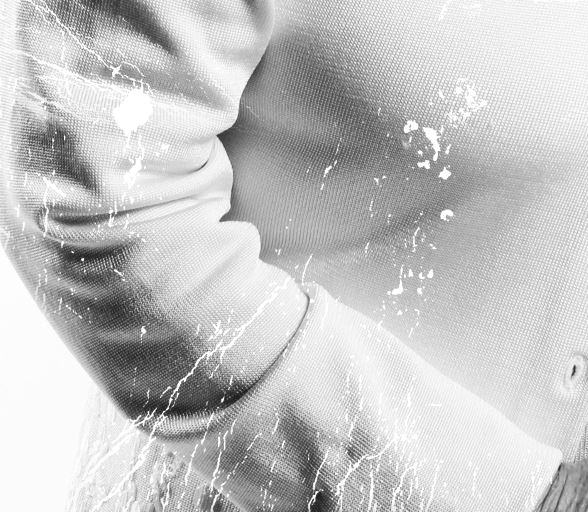
The final effect was the damaged effect that can be found more clearly in the image above. I decided to do this because the effect that the frame gives the image reflects the same kind of damage that happens to old, archival images. Therefore here, I am referencing the past/youth of June, and contrasting it with the present, using the style of the image to reflect past trauma (through “damaging” the image) while the subject can still be seen smiling as her current self, a survivor.







I believe the presentation of the images in a zine has turned out well as this gives my final images a good structure, and allows me to show a narrative of life at my home. I believe the quality of images that I used is high throughout most of the zine, and there is an even focus on portraiture, objects and external shots of the house. One image that I believe doesn’t aesthetically fit in is the double page spread in the centre of the zine as it is warmer than the rest of the selection due to poor lighting. I, however, have still included it as it serves as a good transition point where the focus on my mum is shifted onto my dad. I believe the structure is much more linear and maintained throughout, compared to my final zine from the Bunker Archaeology unit, where the subjects and scenes were varied.
During the first half of the visit to the archives we had a talk and found out a lot about the content of what is stored at the archives and pieces of historical facts and data that were shown to us.
I learnt that when people immigrated to Jersey, they were given "Alien cards" which acted like visas and identification cards.
The earliest record that the archives hold is from 1378 which is over 600 years old.
The archives also hold police records, for instance, they have a record of a boy named Louis Belamore who was 13 years old, and he was taken to court for shoplifting. The result was that he was banished from the island of Jersey as he was not born there, forbidding him to return.
In terms of the occupation of Jersey, the archives hold records of the King's letter to Jersey, stating that the island should be demilitarized. They also have a copy of the terms of surrender, troop records and typed out BBC news. The archives hold over 30,000 occupation registration cards that were required for every islander who was over the age of 14.
Louisa Gould was an islander who sheltered a Russian prisoner, however she was eventually caught. I found out that islanders were allowed to send Red Cross letters to the UK, however they were only allowed to use 25 words and were meticulously censored by the soldiers.
German soldiers also sent letters back home for Christmas, however, some of the post workers stole some of the letters. One of the post workers who stole the letters kept them for over 60 years until they donated them to the archives.
For the second half of the visit, we went upstairs to firstly look at some of the copies of items held by the archives. I saw an identity card, under the name of Goldman which had a large red cross across it to display that they were Jewish.
I wrote down some of the reference numbers of some of the artifacts what can be requested or viewed online:
German letter: B/A/W30/1
Letter from Captain Sanders who was the captain of the first vessel: L/C/219/A1/2
Liberation letter: L/C/18/1
Afterwards we has a guided tour inside two of the rooms where the archives were kept and looked at the real-life artifacts. We also learned about the process of looking after the artifacts and also the measures the archives go through to making sure the items are in the best condition they could be. For example, when you walk into the vault, you are hit by a wall of air as it prevents insects from entering the vaults. If a fire occurs, the vaults close within 30 seconds and then a gas is released that removes the oxygen in the air which stops a fire from occurring from within the room.
I learnt from this trip the importance of the archives as you can learn little things that make up a bigger picture of the world during that time period. I also realized the extent the workers go through to preserve the artifacts and how meticulous the care is.
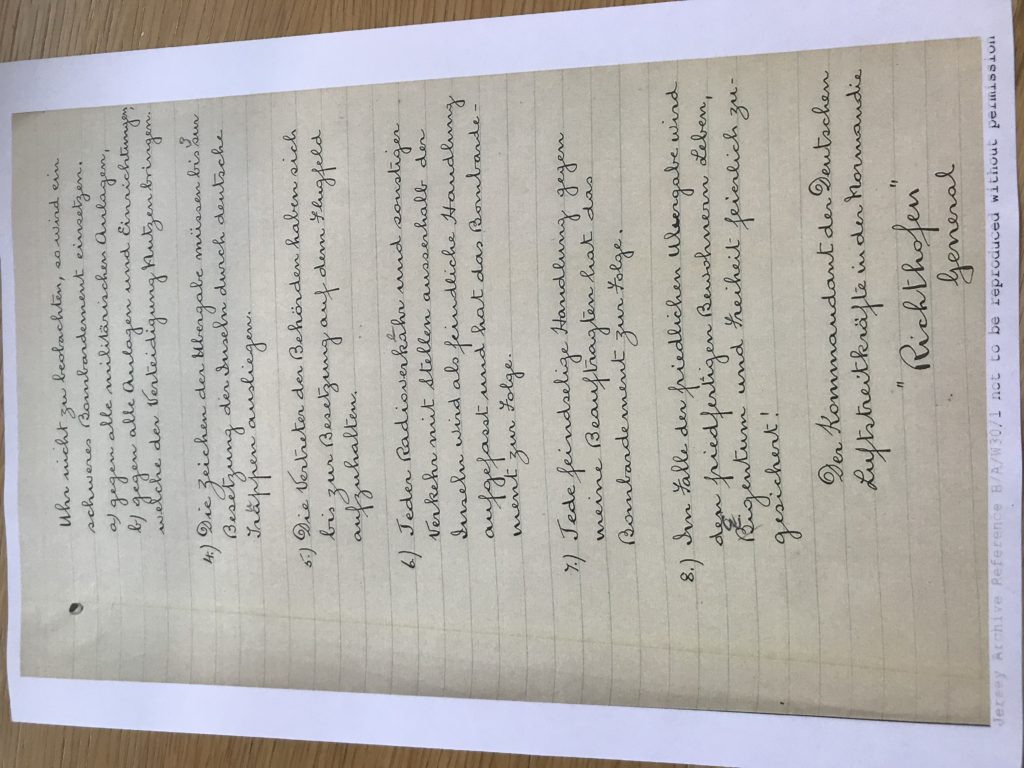
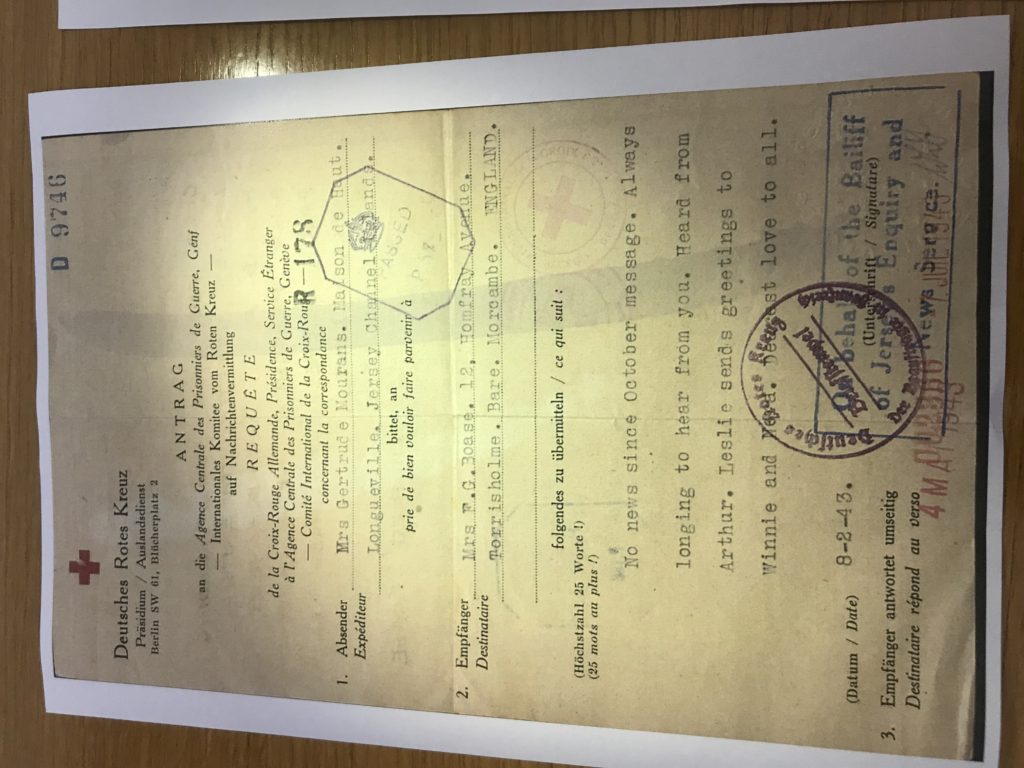

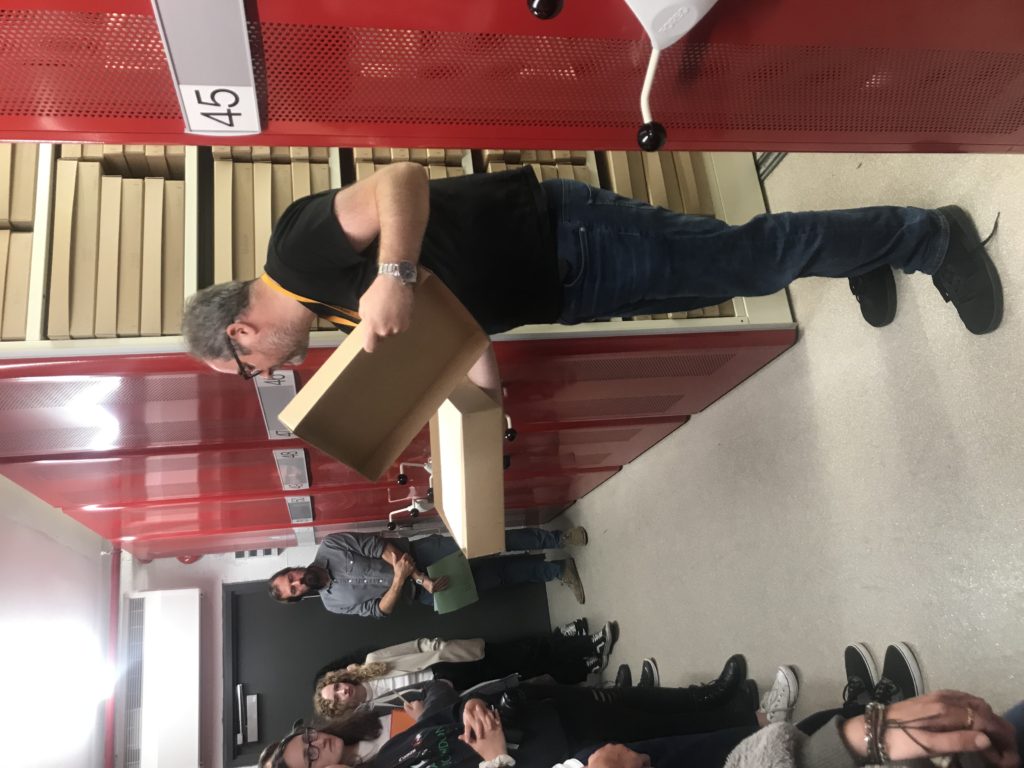
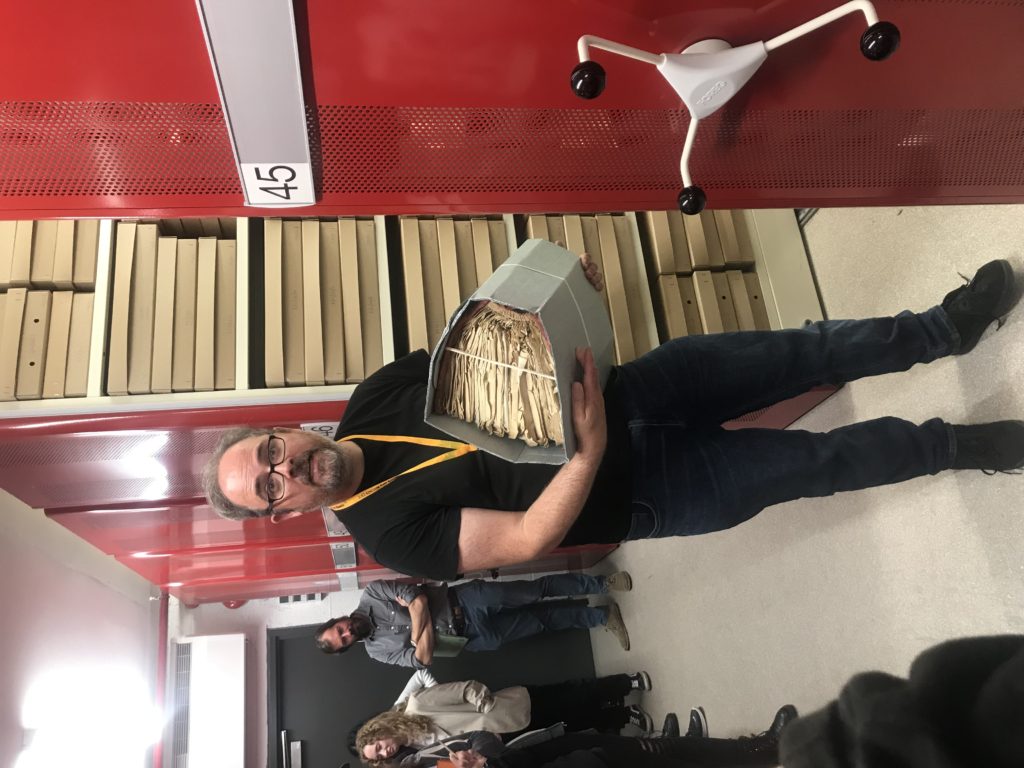
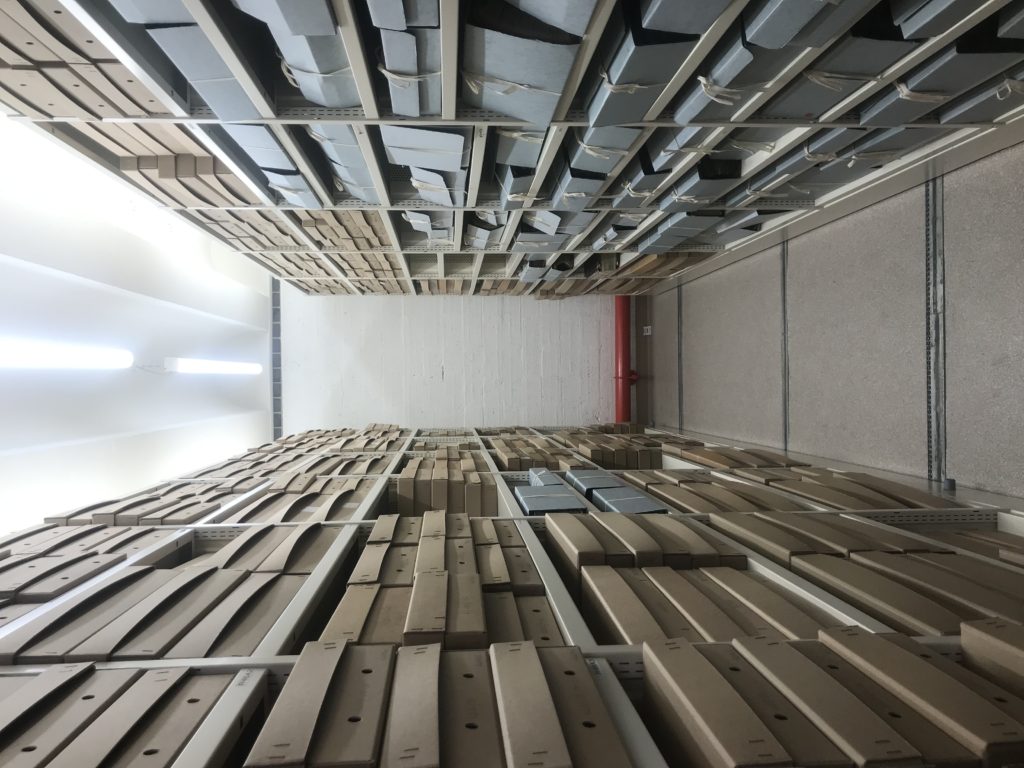
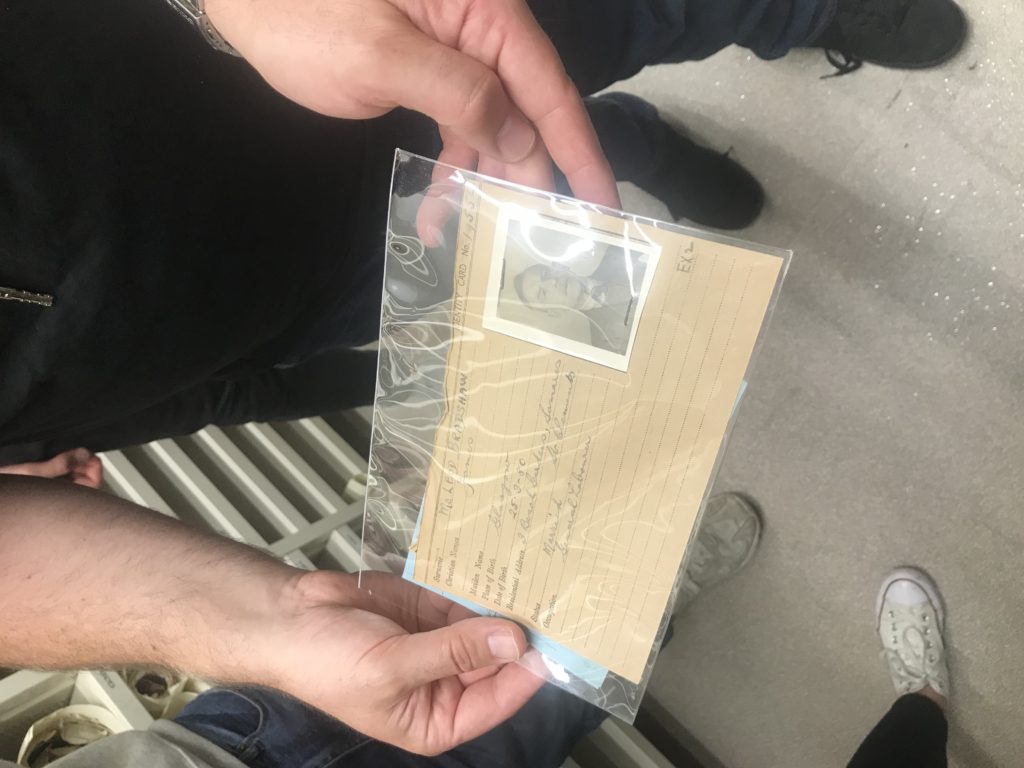
During World War II, the Crown left Jersey defenseless and the Island became occupied by German forces.Jersey War Tunnels are a product of five long years of occupation; they bore witness to the particular cruelty of the Nazi regime.Dug deep into the hillside by forced and slave workers from nations across Europe, they now contain an underground collection of thought provoking exhibits that tell the fascinating story of Jersey’s occupation from resistance, through to starvation, then eventual liberation.
The imposing, cavernous entrance tunnel will take you deep into the hillside, into a network of extraordinary tunnels unlike anything you have seen before. This vast network of underground tunnels was designed to allow the German occupying infantry to withstand Allied air raids and bombardment in the event of an invasion. In 1943, it was converted into an emergency hospital.
As the UK announced that it would not defend the Channel Islands, residents were faced with an impossible choice – to stay and face the unknown enemy or to go, leaving behind families, friends and possessions.
As restrictions and shortages increased, daily life for islanders became more difficult. This recreation of a Jersey home during the occupation gives an insight into the make do and mend mentality that kept residents going throughout these dark years. In the final months of occupation, Islanders became desperate. Food shortages were acute and with no knowledge of when the war would end, the Island entered its darkest times.
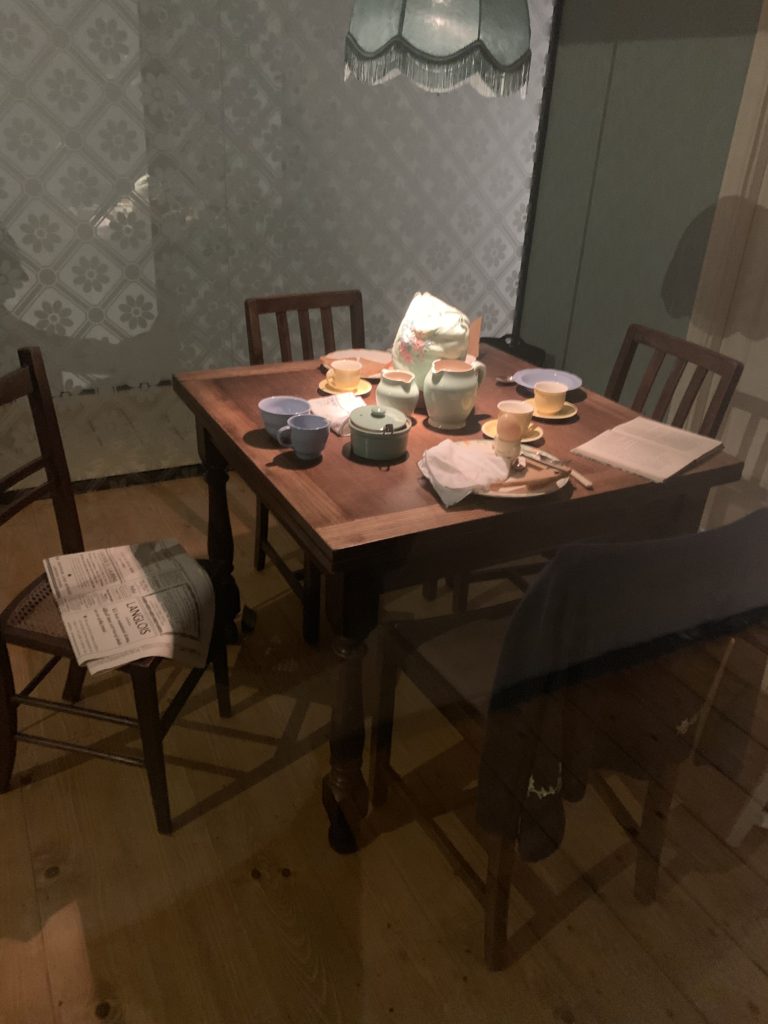
And while we were in the war tunnels we saw a representation of the daily rations they used to get which were barley enough for the people.
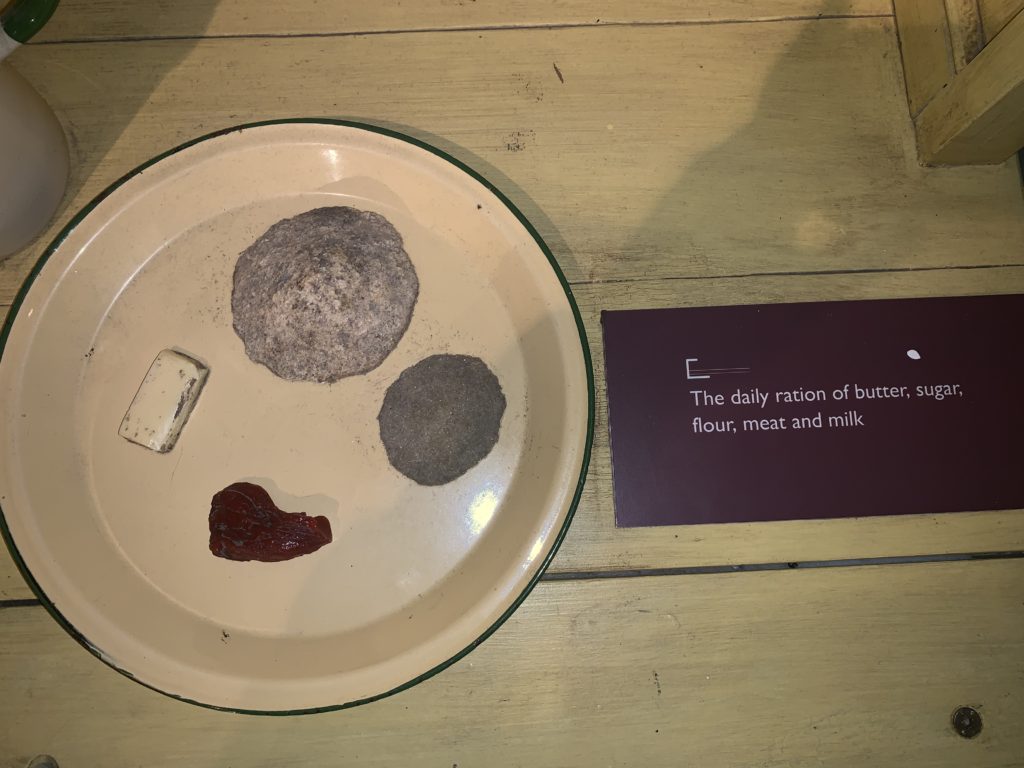
Far in excess of their military significance, the Channel Islands used one twelfth of the reinforced concrete of the entire Atlantic wall. Had the Nazis deployed these resources more reasonably, they could have doubled the strength of the Atlantic wall and had a profound effect on the Allied advance.
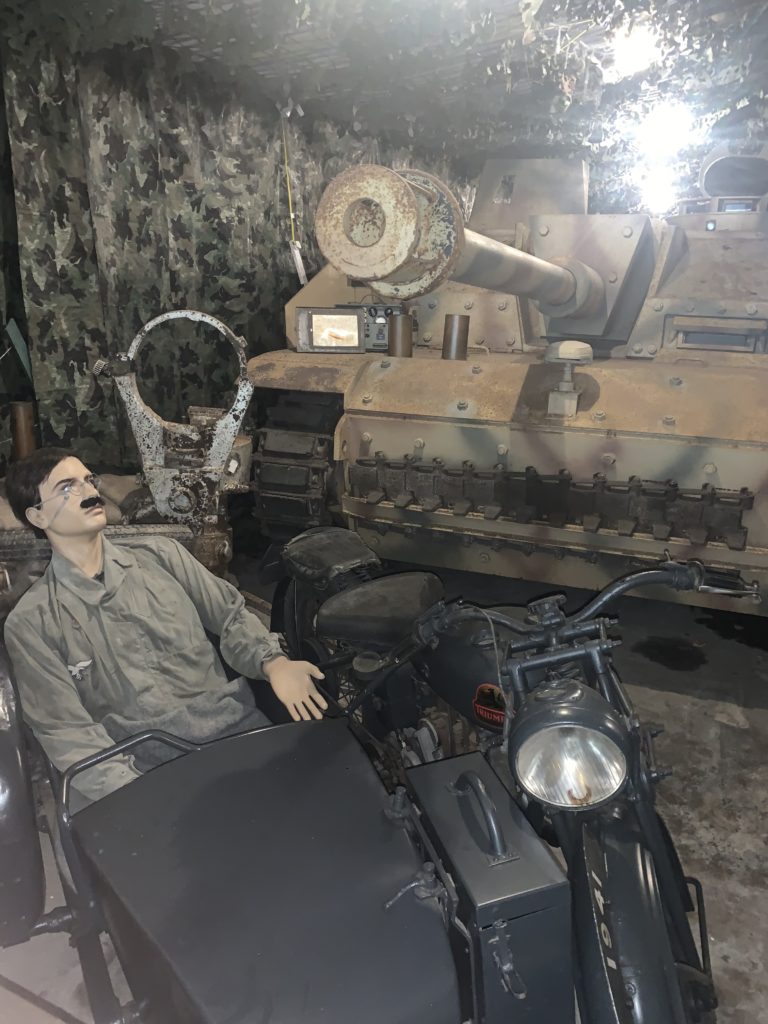
Men toiled with picks and shovels, loading rocks into trolleys and pushing them back up to the tunnel entrance. In the semi-dark and the damp, with the constant fear of rock falls, this back-breaking work went on in 12-hour shifts. I experienced it all through an interactive audio-visual experience in the unfinished tunnel itself.
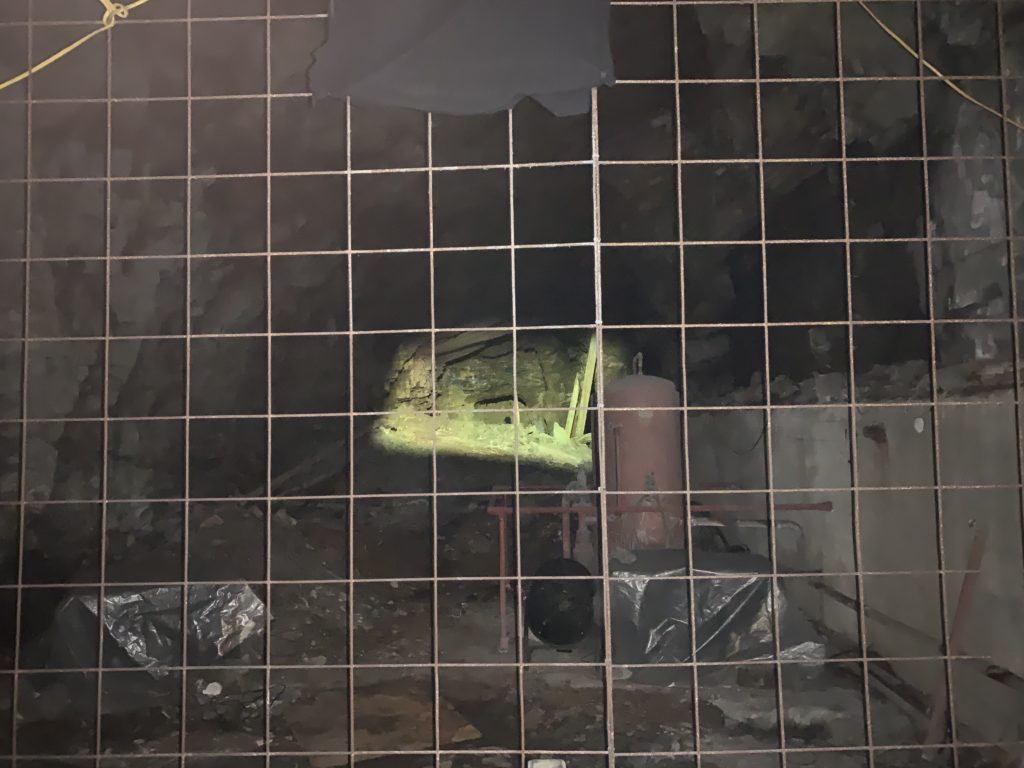
In conclusion, going to the Jersey war tunnels has made me connect and feel what living and working in them at that time felt like. And i’m glad we got to see all those stories of what happened in these tunnels at the time during the occupation.
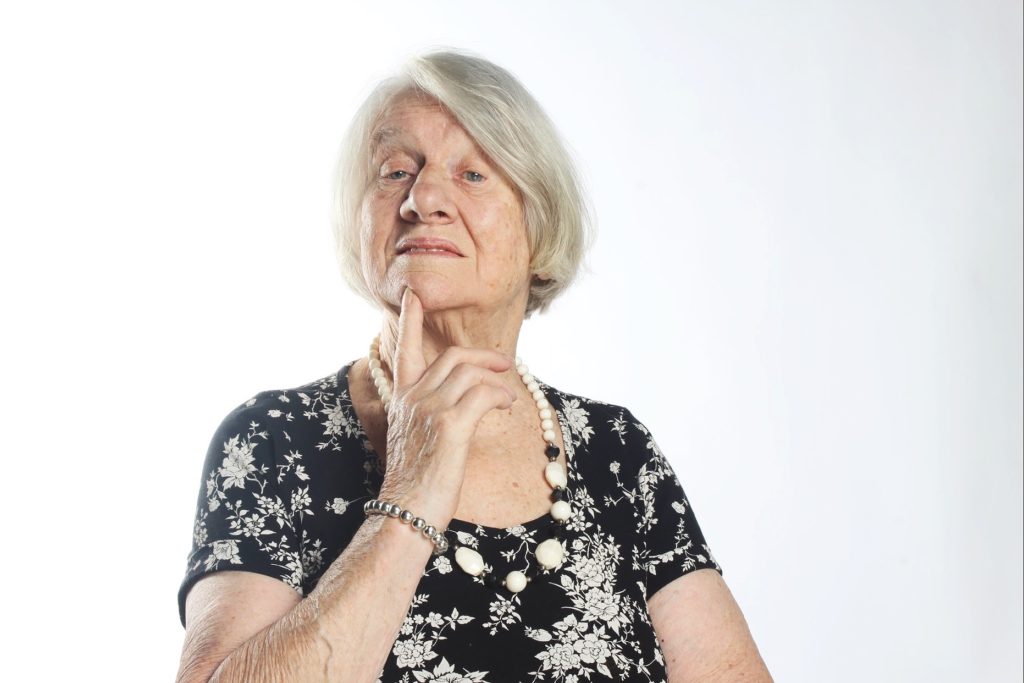

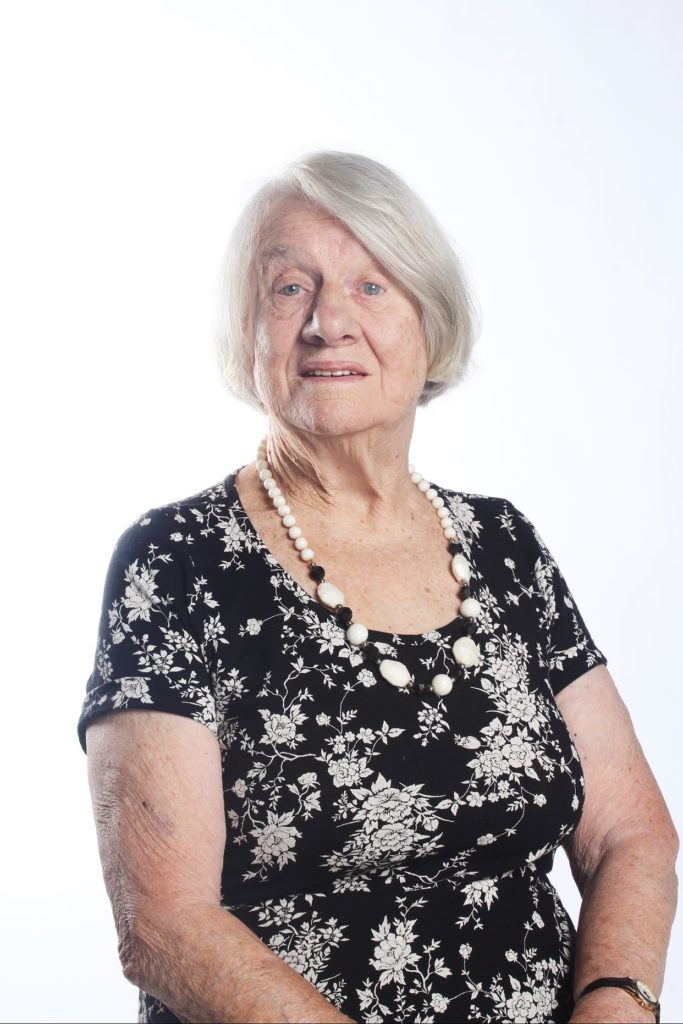
Similar to a standard portrait however you go to where your subject spends most of their time. Often somewhere relevant to the person’s passion. If you’re taking a picture of an artist, you’d show up in their studio and take pictures while they work. If taking a picture of a family member, you might pick the place that associate most to them and use that as your environment. A good environmental portrait should bring out your subject’s personality in a stylized way however it needs to be an exaggeration.
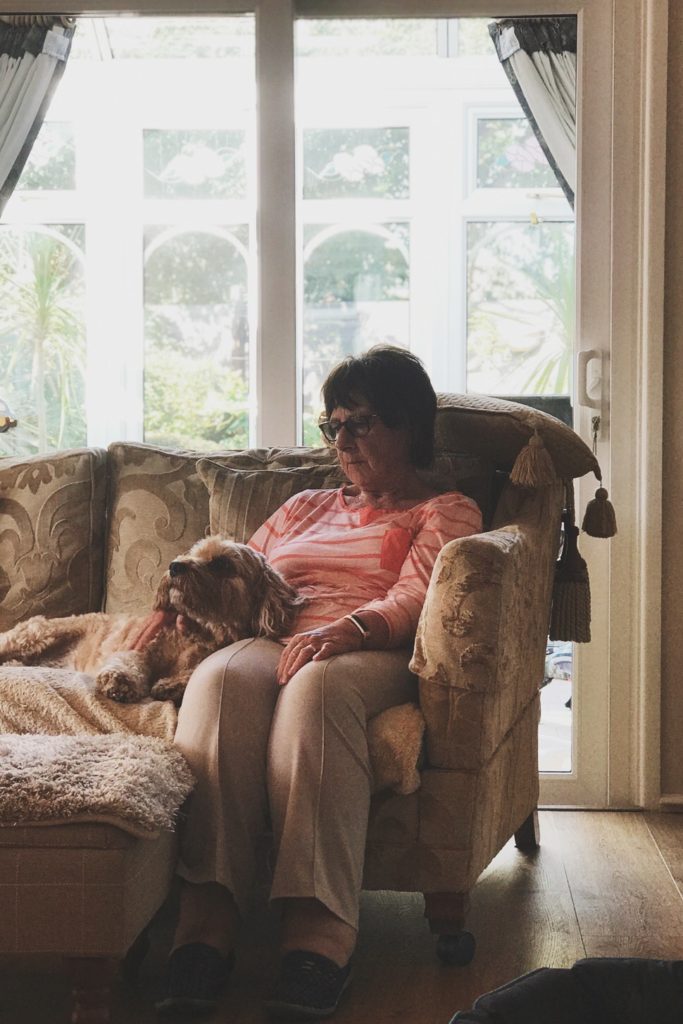

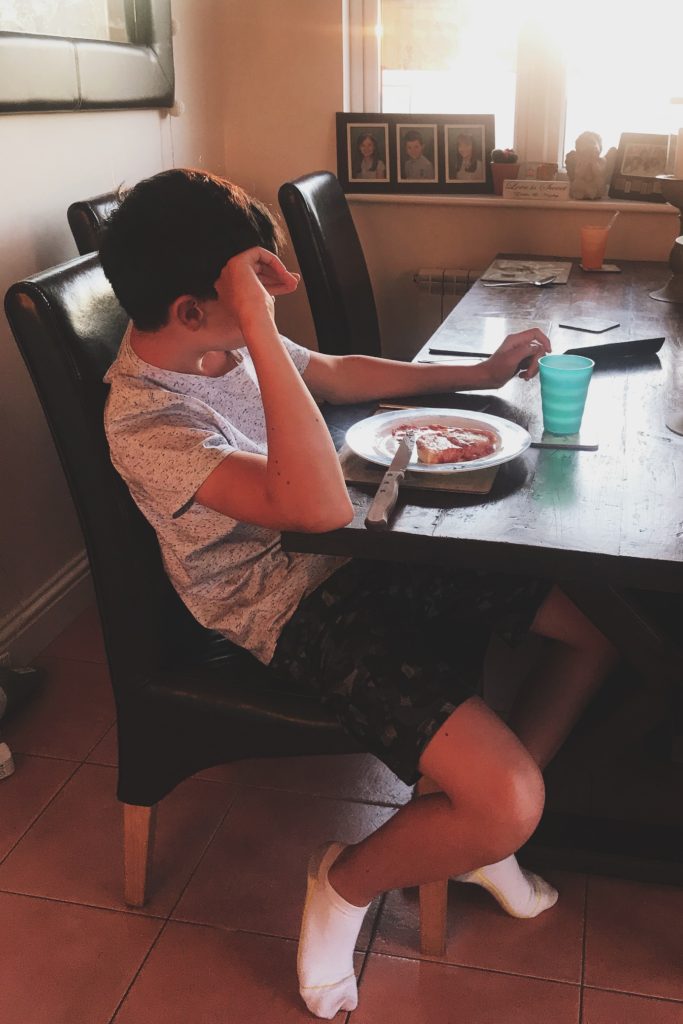
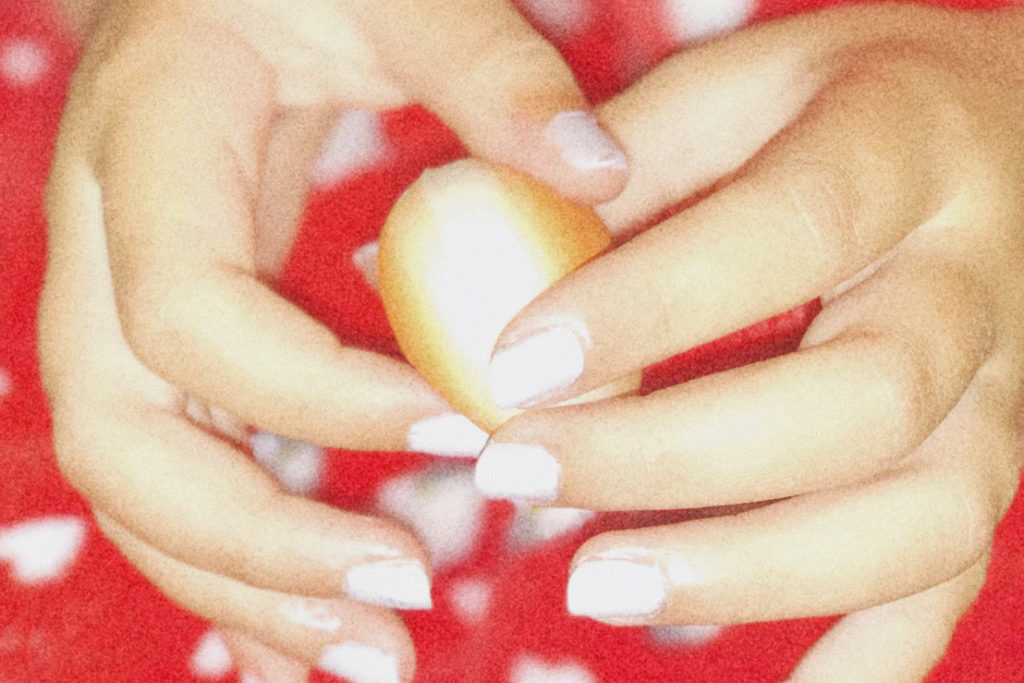
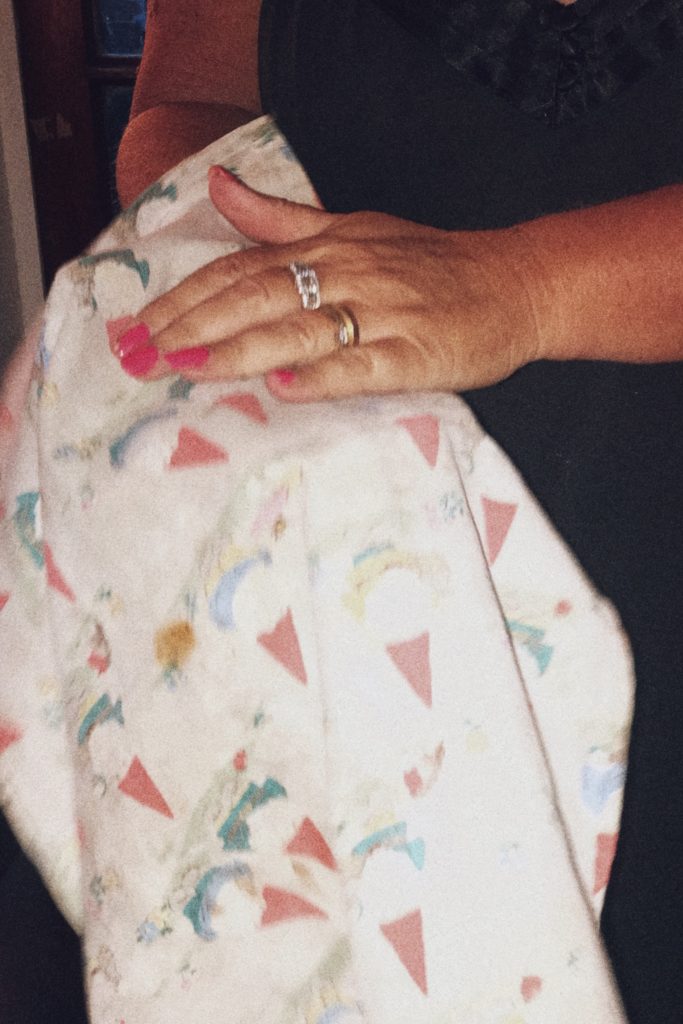
For one of our photography trips, we visited the Jersey Archives and the War Tunnels to gain more information and photos about the occupation.
Jersey archive:
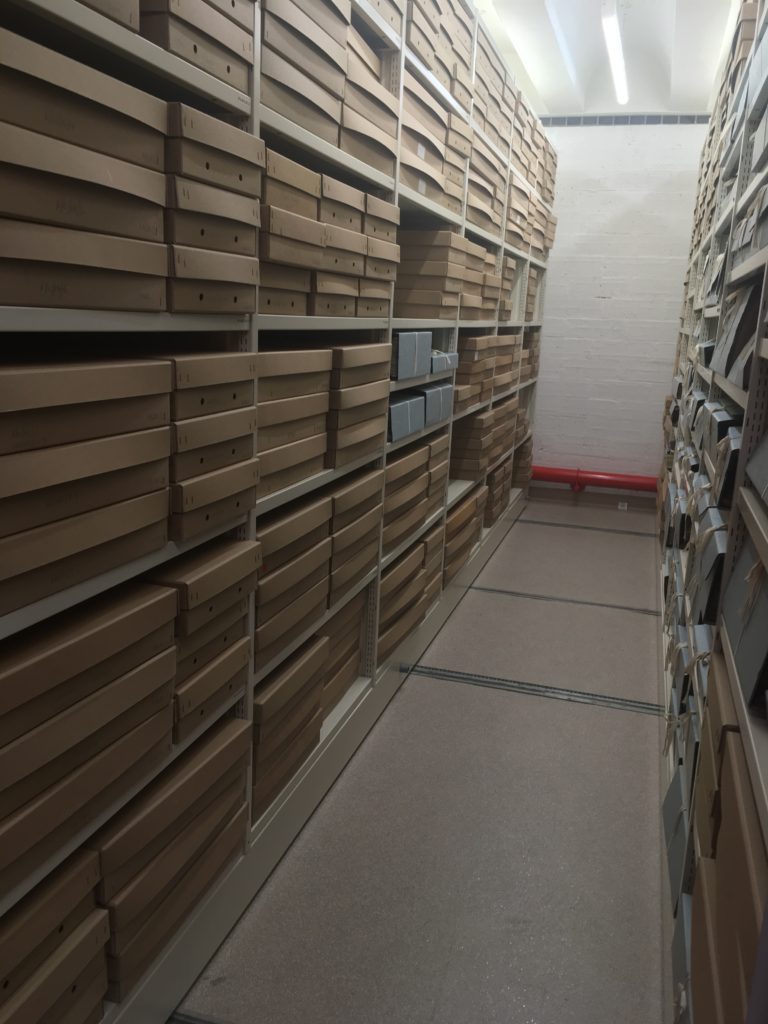
Jersey Archive is responsible for the islands historic sites, museums and public archives. They hold collections of artifacts, works of art, documents and information relating to the island, dating back to as far as 600 years old. #
During our visit, we had the opportunity to look at documents from the second world war and from when Jersey was occupied by the Nazis. There were letters from the German soldiers to their families which were never sent, messages sent through the red cross from the Jersey occupants who were stuck on the island, registration and alien cards, and messages from the royal family to the island.
This was all incredibly interesting as we were given insight as to how people lived their lives and survived during the war, and what a different time it was compared to the modern day.
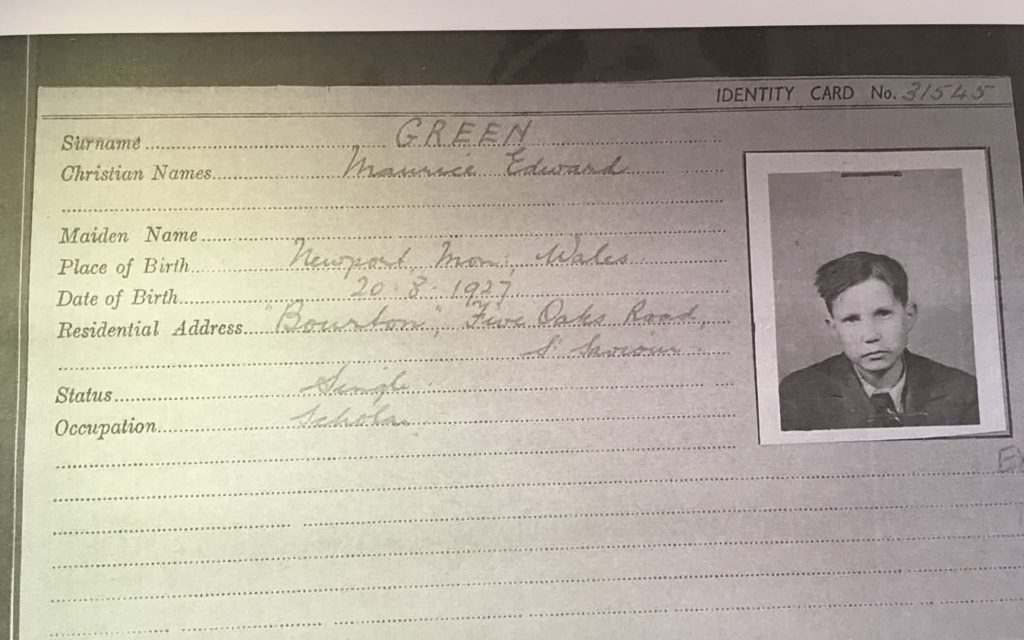
One of the registration cards belonged to the only known survivor of diabetes on the island during the war, a boy named Maurice Edward Green. My uncle actually met this person, now an old man, while he was working, and Maurice told him his story of what he did during the war. Due to the lack of resources, the supply of insulin ran out, leaving those who depend on it to either find other ways of gaining insulin or to unfortunately die. Discharging himself out of the hospital, Maurice went to the library and read up ways on how to keep his insulin up, and then proceeded to scavenge for eggs and other natural resources, and because of this he managed to survive.
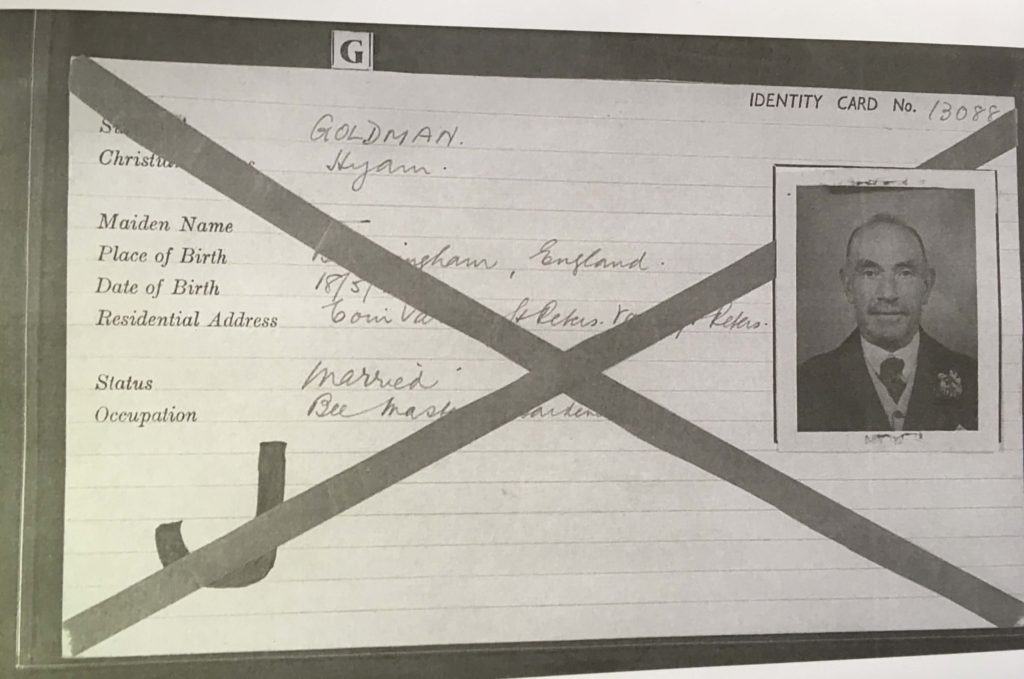
Hyam Goldman, a bee keeper who lived on the island during the war. Jersey Jews weren’t sent to camps as commonly as those who lived in Germany, however there were still discrimination put against them. Jersey Officials were ordered to ban Jews from holding jobs or running businesses and confiscated their property. They were banned from public places, were subject to special curfews and could only go shopping between 3PM and 4PM.
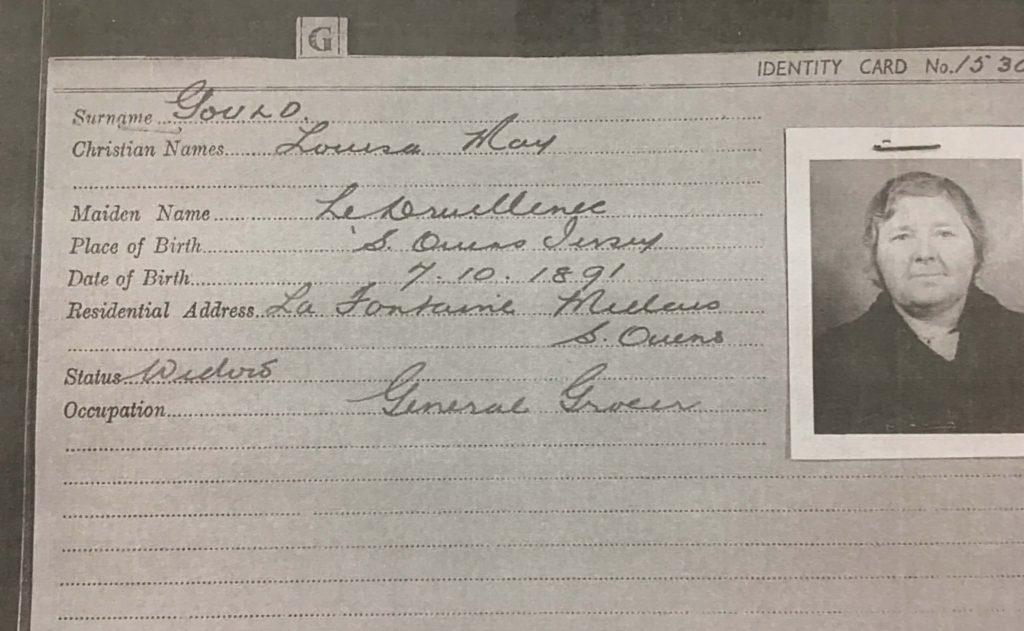
Louisa May Gould was a woman who lived during the second world war and was sadly killed when it was found out she was sheltering a Russian Slave escapee.
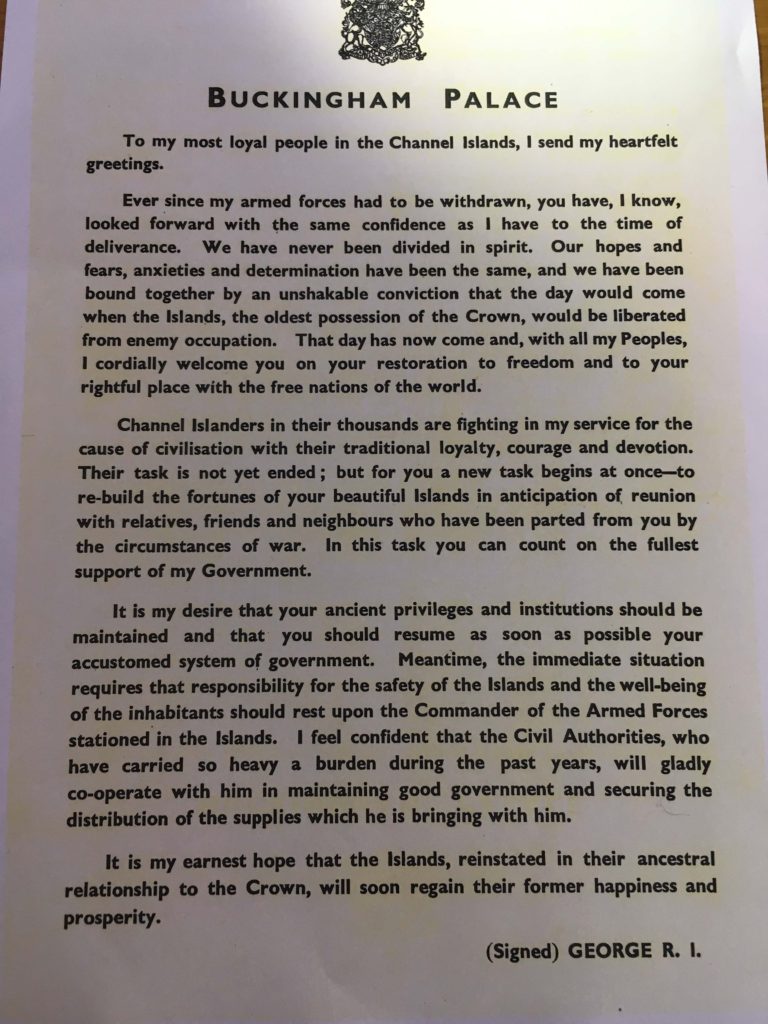
This letter was sent to Jersey from Buckingham Palace after the Island was Liberated.
After we had learnt more about Joan’s history, we went into the photography studio to take some portraits of her.
Photoshoot process:
For this photo shoot we used a transmitter on our cameras in order to produce clear images. This transmitter caused the flash to go off when the shutter opened. In combination with this I used an ISO of 100, and my exposure time was 1/125.
Image selection
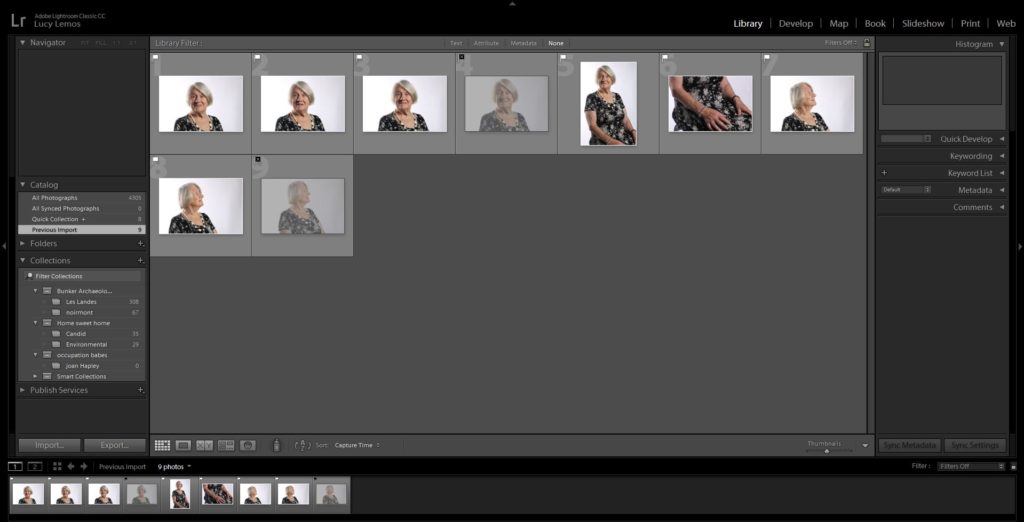
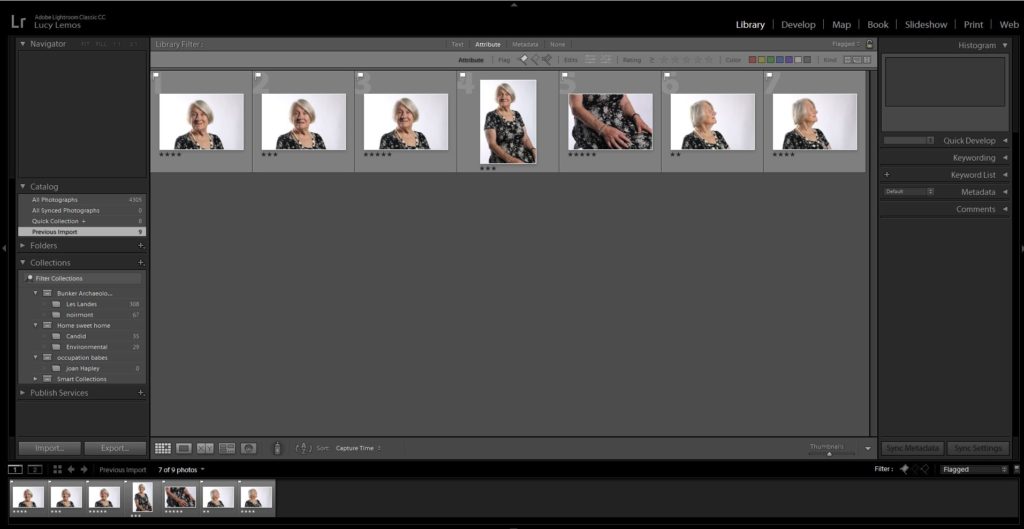


Before:
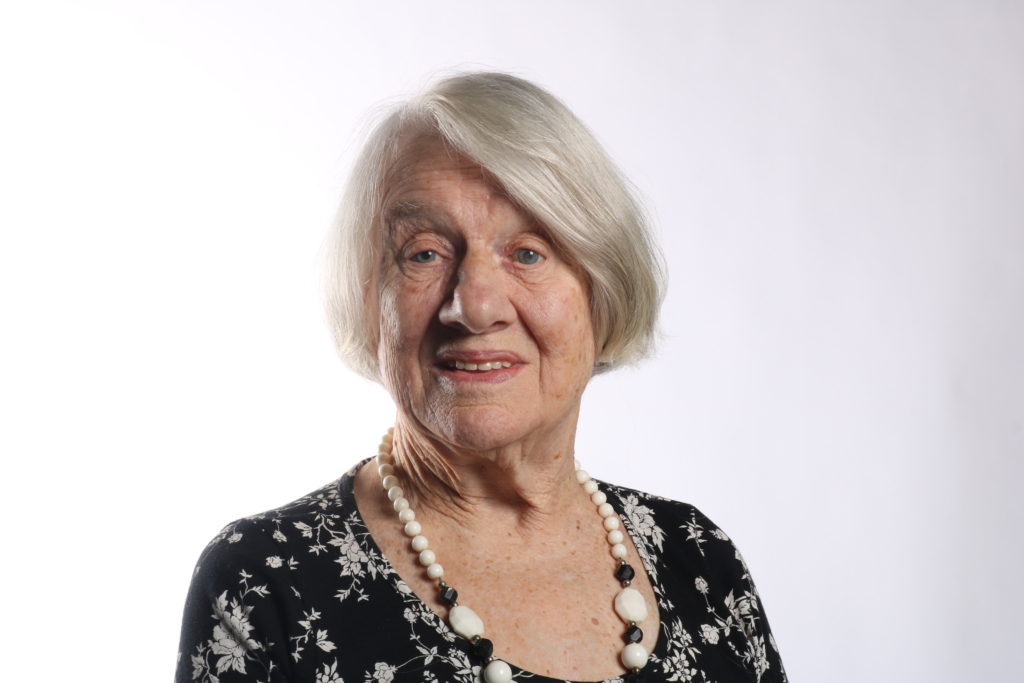
After:

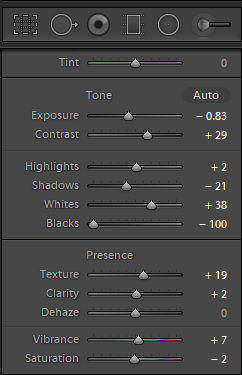
Before:

After:
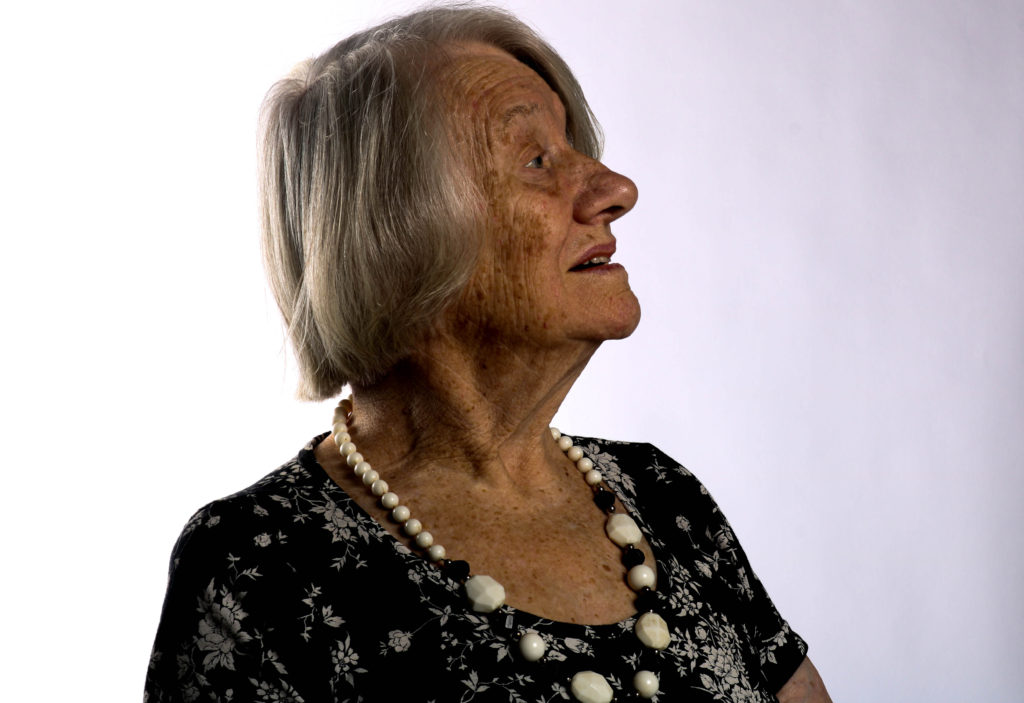
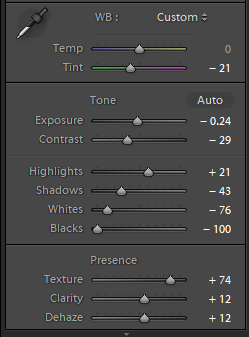
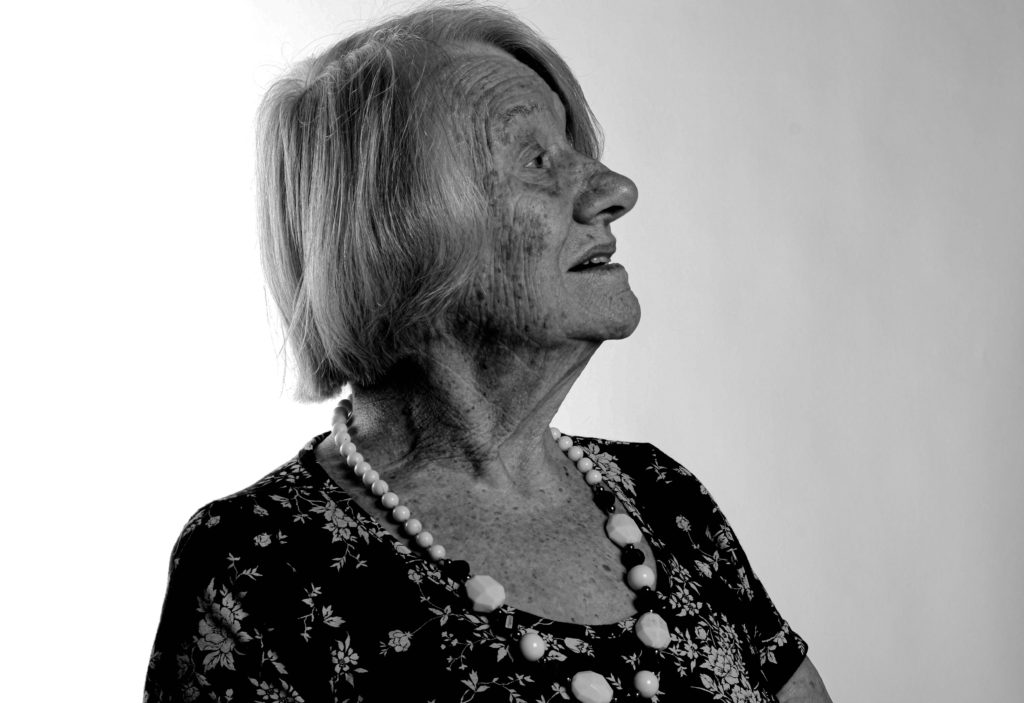
For the edits in this shoot I decided to primarily focus on emphasizing bobs more prominent features while highlighting some of the more discrete details. This was mainly done using levels and the black and white mix in the black and white edits. There are some subtle radial filters used in order to allow a higher contrast while avoiding glaring highlights.
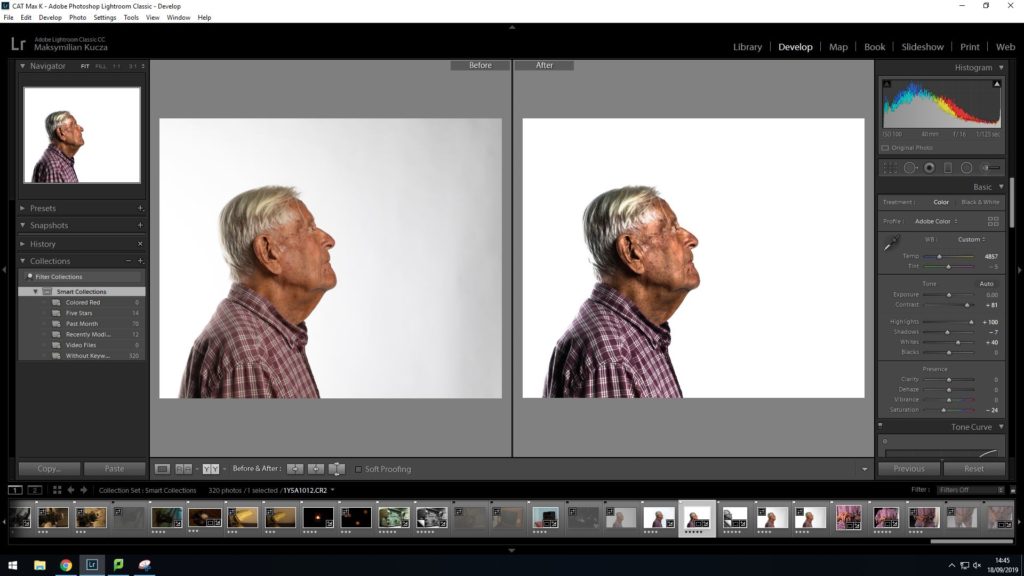
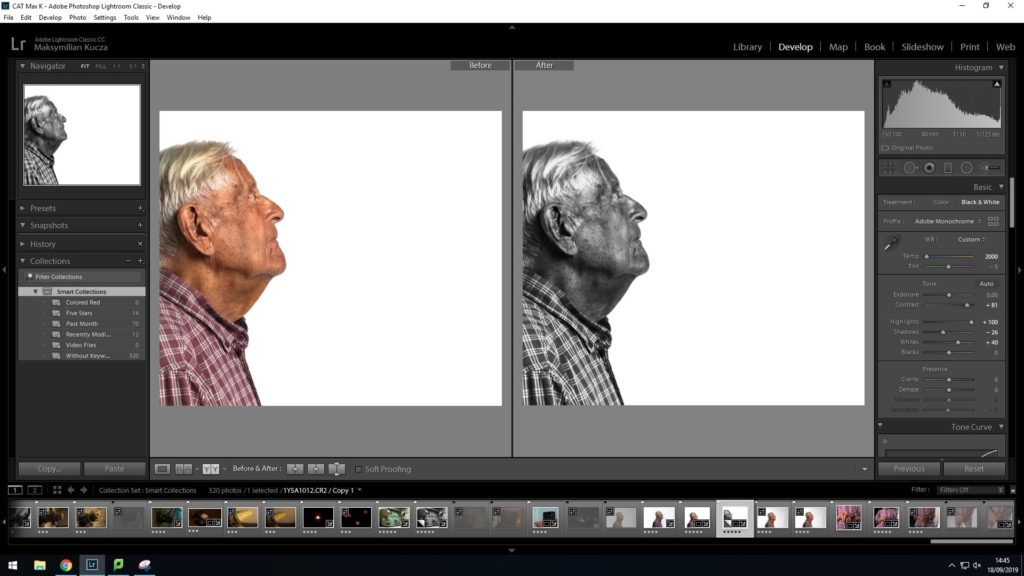
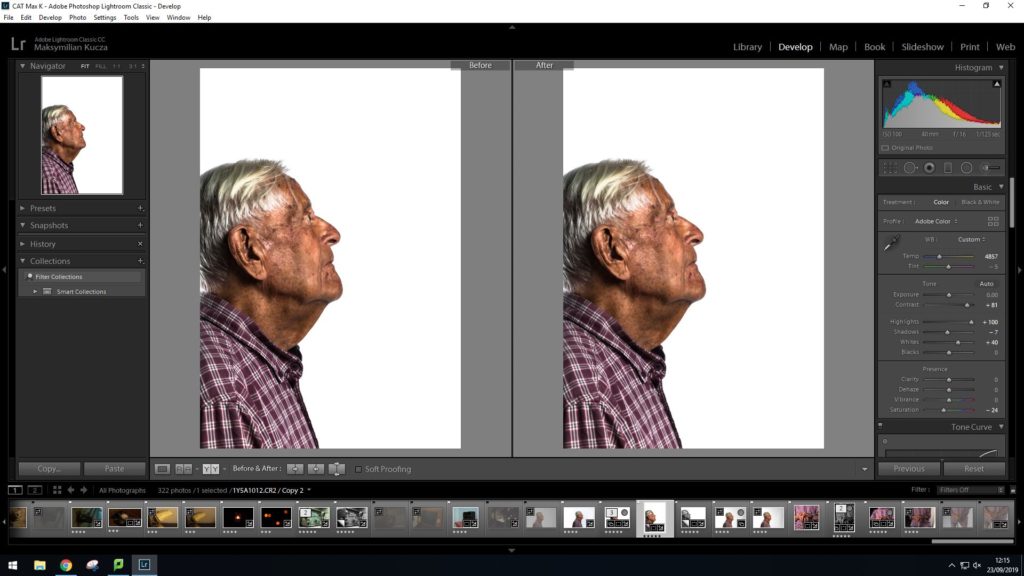
On these images a lot of detail was visible on his face such as small veins on his nose and various markings on his temple. I took advantage of the bright studio lighting as well as skins natural reflective properties in order to highlight these features. I lowered the saturation on the color edits as the increased contrast left the image looking highly over saturated and although I experimented with adjusting the vibrancy to bring back some of the color lost in this process, I eventually decided upon leaving the vibrancy at neutral.
In the black and white edit I made a heavy crop in order to hide the back lighting which in post, I decided was too bright. in order to avoid losing too much of the original composition to hide the back lighting I ended up using a small radial filter in order to hide some of the highlights on the back of his neck.
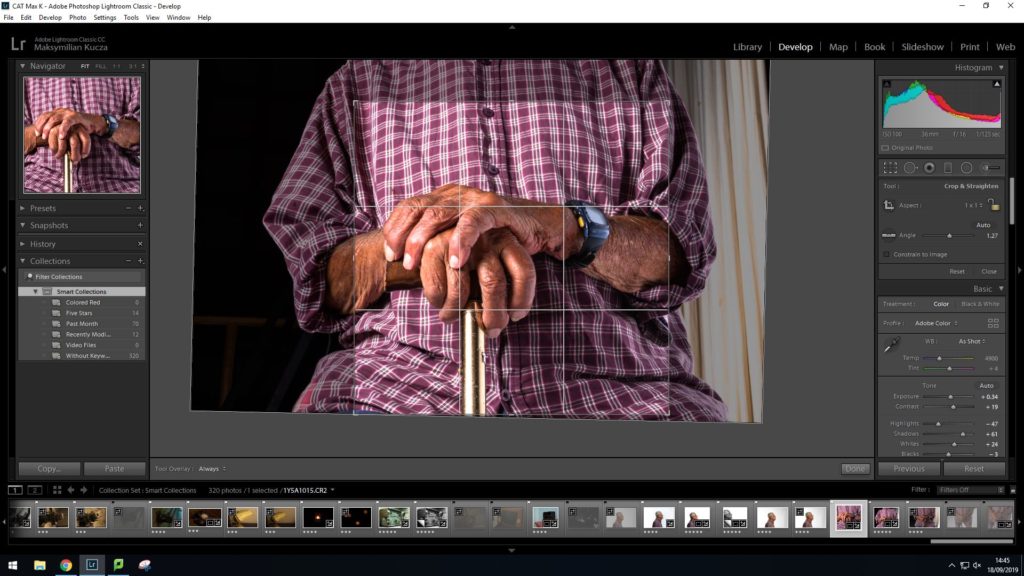
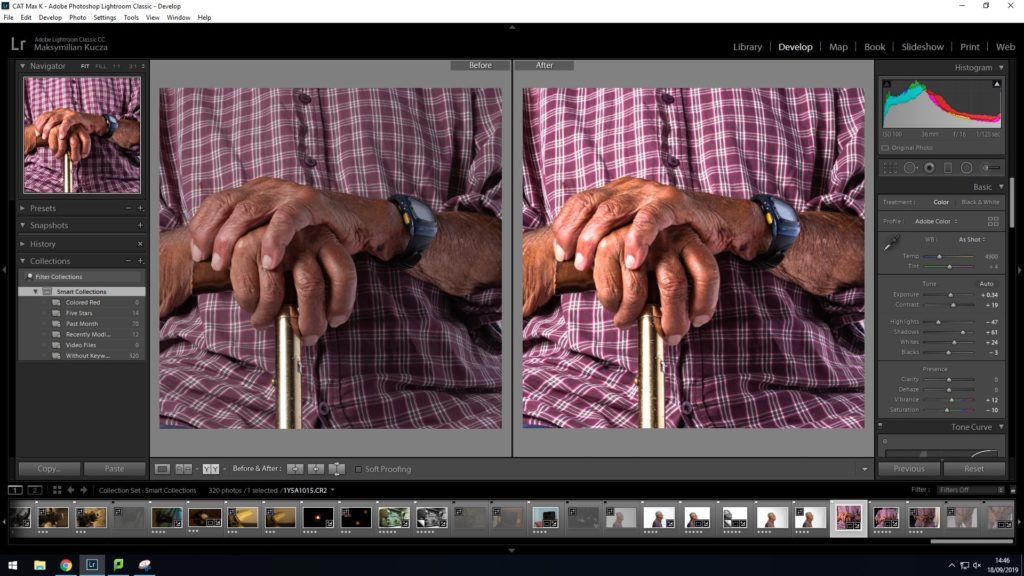
Here I decided that I wanted the primary subject to be the hands resting atop the cane and thus did some aggressive cropping to do so.
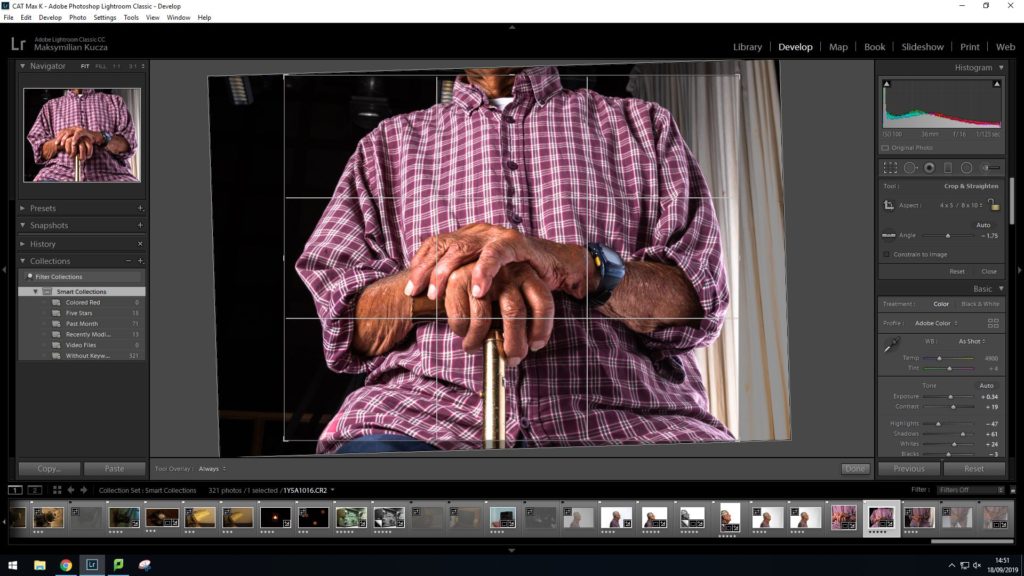
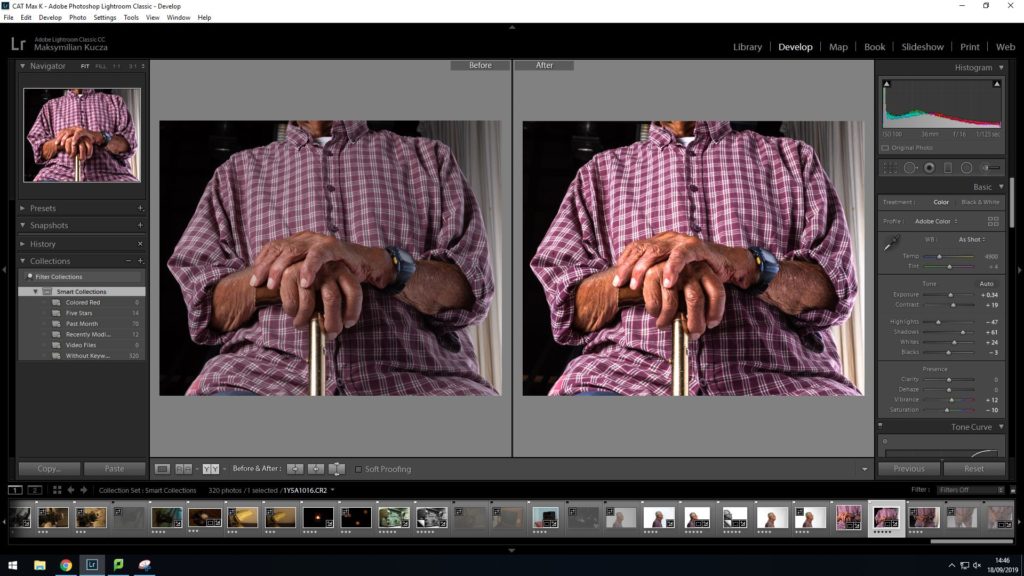
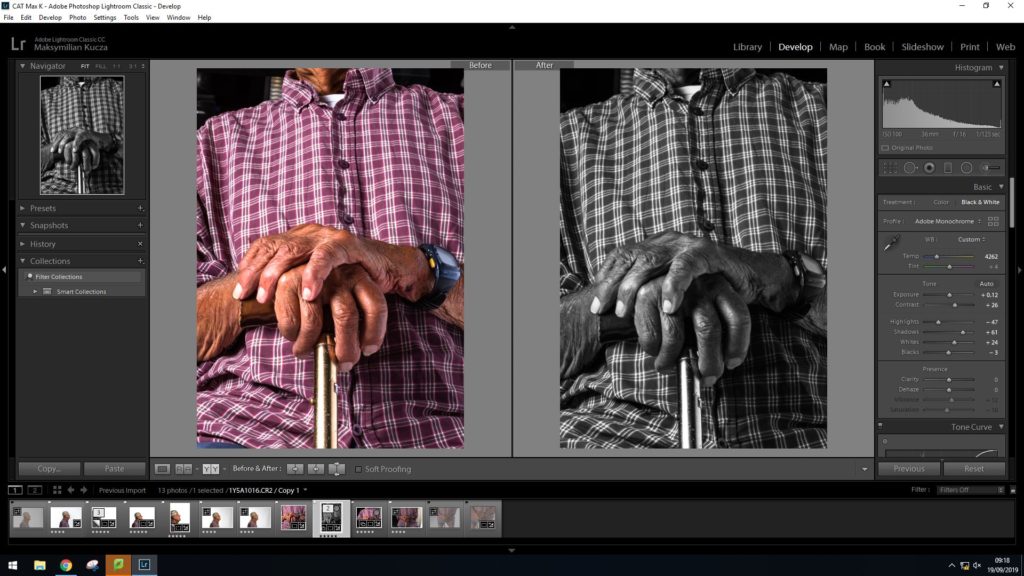
In these images I decided against using the studios infinity wall as I decided I wanted a darker and less clean background for these images. This helps to bring out the highlights of the subject in the images. I started by adjusting the crop angle and then preserving it while doing the perspective corrections in order to have finer control over what is shown in the image. then followed a similar process to the profile shots in terms of tonal and color adjustments.

